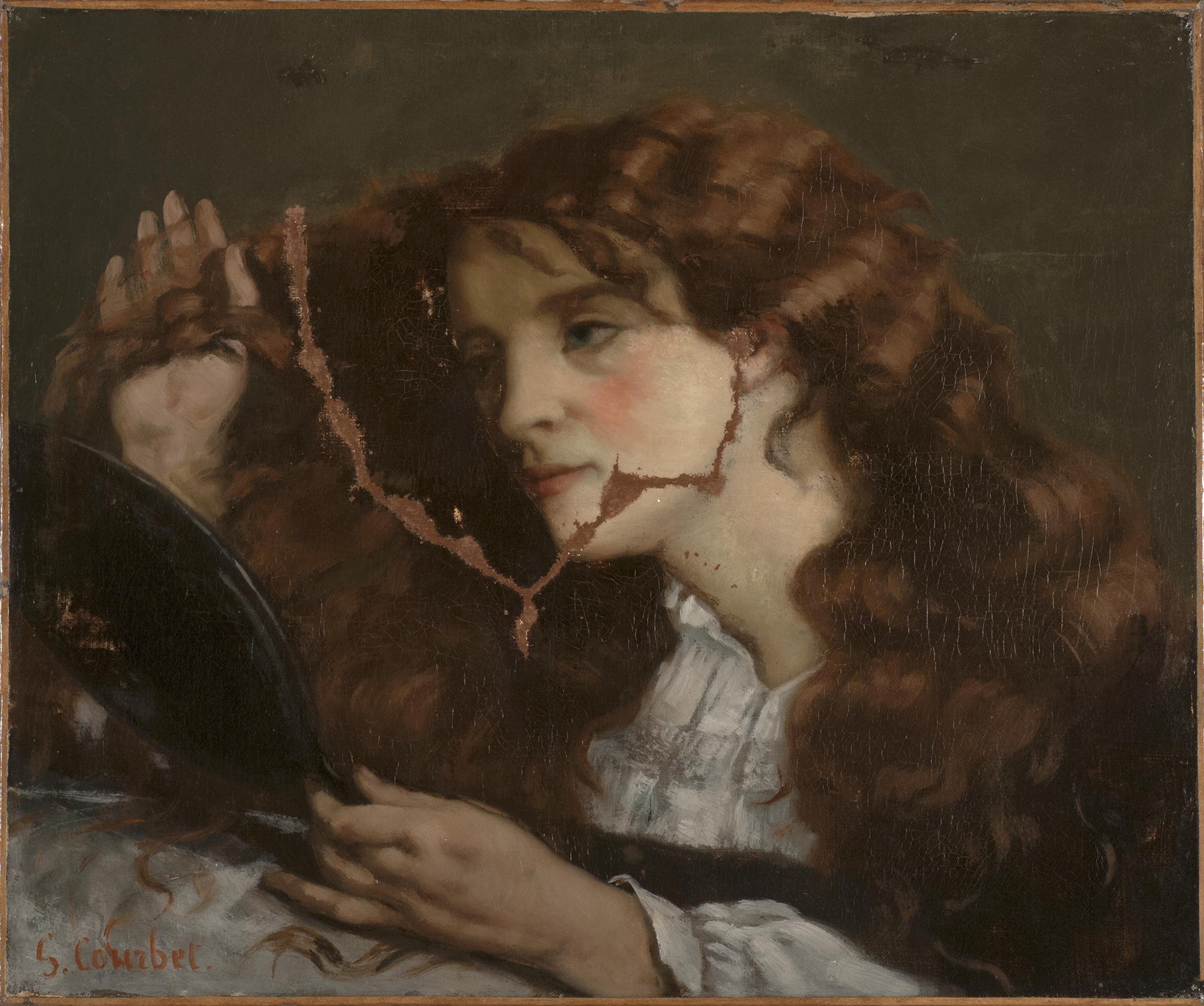![]()
Gustave Courbet, Jo, the Irish Woman, ca. 1866–68
| Artist | Gustave Courbet, French, 1819–77 |
| Title | Jo, the Irish Woman |
| Object Date | ca. 1866–68 |
| Alternate and Variant Titles | La Jo, femme d’Irlande; La Belle Irlandaise; Portrait of Jo |
| Medium | Oil on canvas |
| Dimensions (Unframed) | 21 3/8 x 25 in. (54.3 x 63.5 cm) |
| Signature | Signed lower left: G. Courbet. |
| Credit Line | The Nelson-Atkins Museum of Art. Purchase: William Rockhill Nelson Trust, 32-30 |
Catalogue Entry
Citation
Chicago:
Nicole R. Myers, “Gustave Courbet, Jo, the Irish Woman, ca. 1866–68,” catalogue entry in ed. Aimee Marcereau DeGalan French Paintings and Pastels, 1600–1945: The Collections of the Nelson-Atkins Museum of Art (Kansas City: The Nelson-Atkins Museum of Art, 2021), https://doi.org/10.37764/78973.5.506.5407
MLA:
Myers, Nicole R. “Gustave Courbet, Jo, the Irish Woman, ca. 1866–68,” catalogue entry. French Paintings and Pastels, 1600–1945: The Collections of the Nelson-Atkins Museum of Art, edited by Aimee Marcereau DeGalan, The Nelson-Atkins Museum of Art, 2021. doi: 10.37764/78973.5.506.5407.
In September 1865, Gustave Courbet left Paris for a two-month stay in Trouville, a popular resort town on the Normandy coast. To his surprise, he immediately attracted wealthy clients who commissioned portraits while relaxing at the seaside. Yet, as he would write to his patron Alfred Bruyas, “Of the two thousand ladies who came to my studio . . . I admired the beauty of a superb redhead whose portrait I have started.”1Pierre Borel, Lettres de Gustave Courbet à Alfred Bruyas (Geneva: Pierre Cailler, 1951), 116n1. English translation from Gary Tinterow et al., Gustave Courbet, exh. cat. (New York: Metropolitan Museum of Art, 2008), 332–33. That striking redhead was none other than Joanna (Jo) Hiffernan (1839–86), a well-known artist’s model who was vacationing in Trouville with her lover, the American painter James Abbott McNeill Whistler (1834–1903).2Joanna Hiffernan’s family name appears frequently misspelled in Courbet scholarship as both Heffernan and Hifferman. Following the publication of Margaret Macdonald et al., The Woman in White: Joanna Hiffernan and James McNeill Whistler, exh. cat. (Washington, DC: National Gallery of Art, 2020), and the extensive research done by those authors, this catalogue’s editors updated Hiffernan’s life dates from “b. 1842/43” to “(1839–86).” This change was made July 29, 2022. The three became fast friends, spending evenings together during which Hiffernan serenaded the painters with songs from her native Ireland.3Courbet to James Abbott McNeill Whistler, February 14, 1877, letter 77-9, in Petra ten-Doesschate Chu, ed. and trans., Letters of Gustave Courbet (Chicago: University of Chicago Press, 1992), 601.
Courbet painted two images of Hiffernan stemming from that time in Trouville, both testaments to their friendship and his longstanding affection for her. Dated 1865, the first is a small bust-length portrait that presents her in three-quarter profile, her famous copper hair casually gathered over her shoulder (Collection of Karen B. Cohen, New York). Probably dashed off from life, this diminutive, sketchlike work may well have served as a study for the second, better-known composition of her that Courbet originally titled La Jo, la femme d’Irlande (Jo, the Irish Woman),4See Exposition des Œuvres de M. G. Courbet, exh. cat. (Paris: Lebigre-Duquesne Frères, 1867), no. 91, as La Jo, femme d’Irlande. (Trouville, 1866.) [repr. in Theodore Reff, ed., Modern Art in Paris: Two-Hundred Catalogues of the Major Exhibitions Reproduced in Facsimile in Forty-Seven Volumes, vol. 38, Exhibitions of Realist Art I (New York: Garland, 1981), unpaginated]. a larger-format painting that exists in four similar autograph versions, including the present work.5Throughout this essay, the four paintings of Jo, the Irish Woman are referred to as versions or variants, as they are not exact copies or replicas in the strictest sense of the terms. In all four, Hiffernan is shown in bust-length and three-quarter profile, wearing a white blouse with delicate lacework and posing before a table. In one hand, she holds a mirror into which she gazes intently. In the other, she runs thick strands of hair through her fingers, perhaps admiring them in the mirror’s reflection. Hiffernan’s face, calm if not inscrutable, is at the center of the composition, but it is her hair that commands the attention of the viewer. Unbound, it cascades over her shoulders in fiery waves of auburns, coppers, and browns.
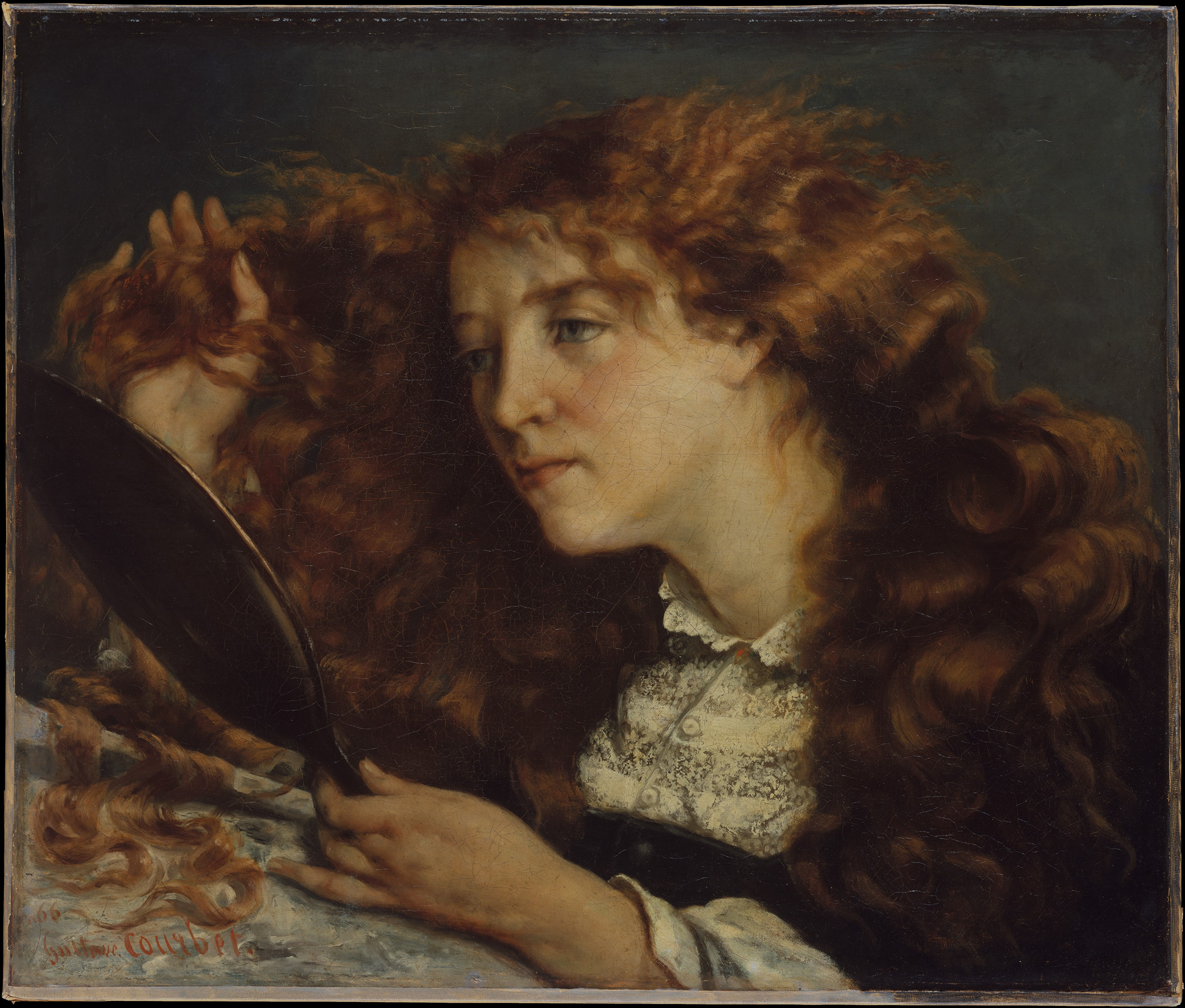 Fig. 1. Gustave Courbet, Jo, La Belle Irlandaise (Jo, the Beautiful Irish Woman), 1865-1866, oil on canvas, 22 x 26 in. (55.9 x 66 cm), The Metropolitan Museum of Art, New York. H. O. Havemeyer Collection, Bequest of Mrs. H. O. Havemeyer, 1929, 29.100.63
Fig. 1. Gustave Courbet, Jo, La Belle Irlandaise (Jo, the Beautiful Irish Woman), 1865-1866, oil on canvas, 22 x 26 in. (55.9 x 66 cm), The Metropolitan Museum of Art, New York. H. O. Havemeyer Collection, Bequest of Mrs. H. O. Havemeyer, 1929, 29.100.63
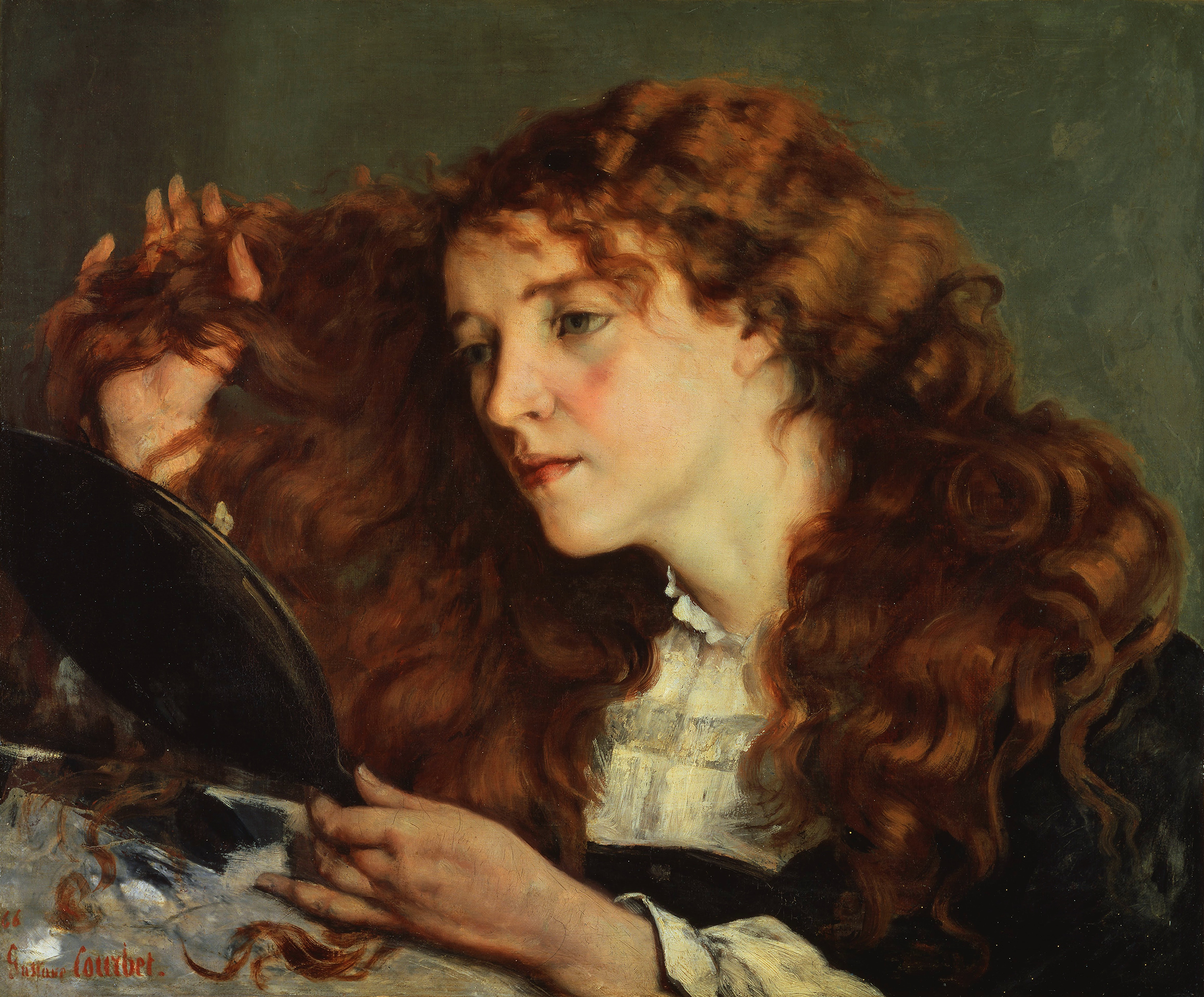 Fig. 2. Gustave Courbet, Jo, the Beautiful Irishwoman, 1866, oil on canvas, 21 1/4 x 25 5/8 in. (54 x 65 cm), Nationalmuseum, Stockholm. Gift 1926 Nationalmusei Vänner, NM 2543
Fig. 2. Gustave Courbet, Jo, the Beautiful Irishwoman, 1866, oil on canvas, 21 1/4 x 25 5/8 in. (54 x 65 cm), Nationalmuseum, Stockholm. Gift 1926 Nationalmusei Vänner, NM 2543
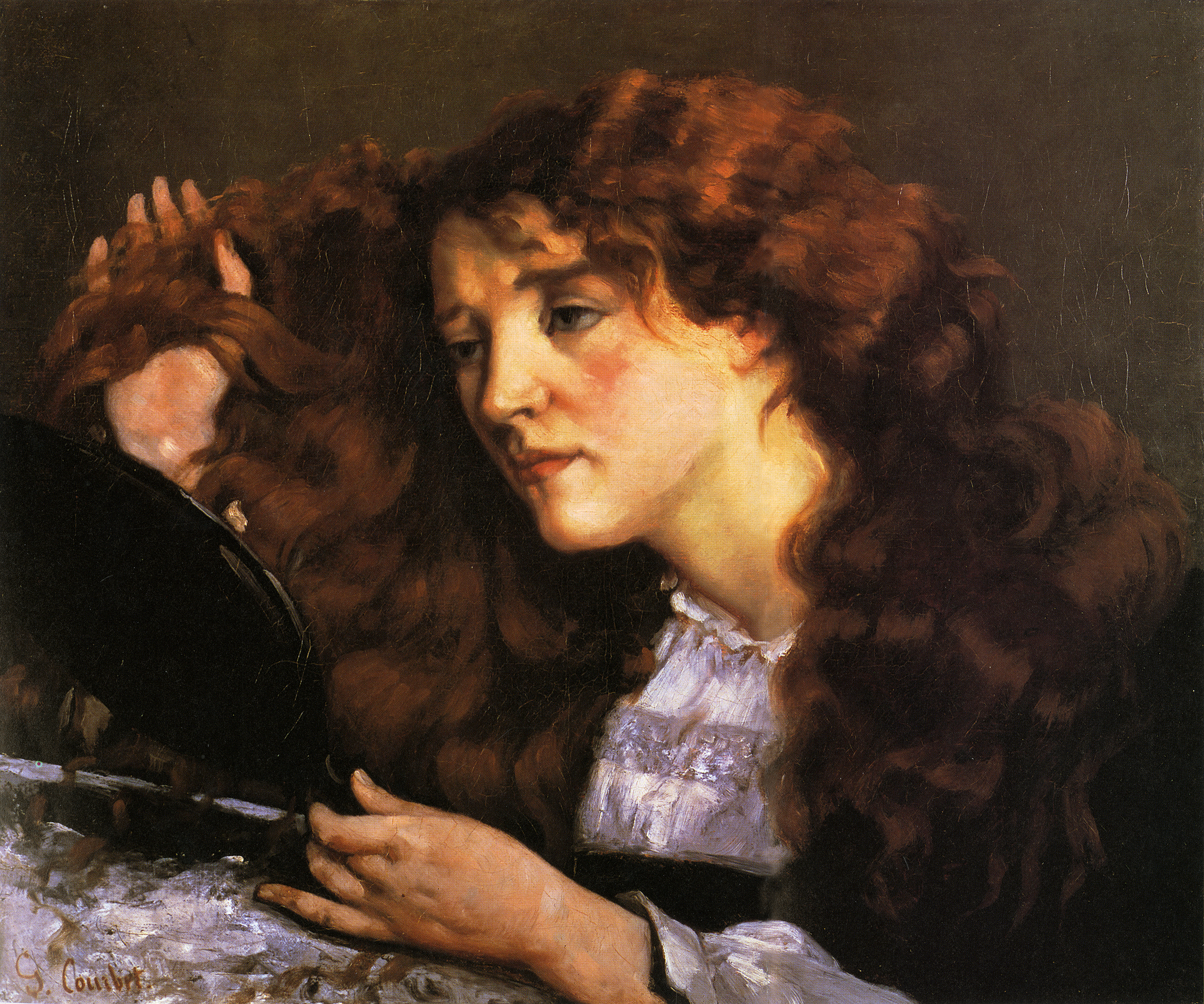
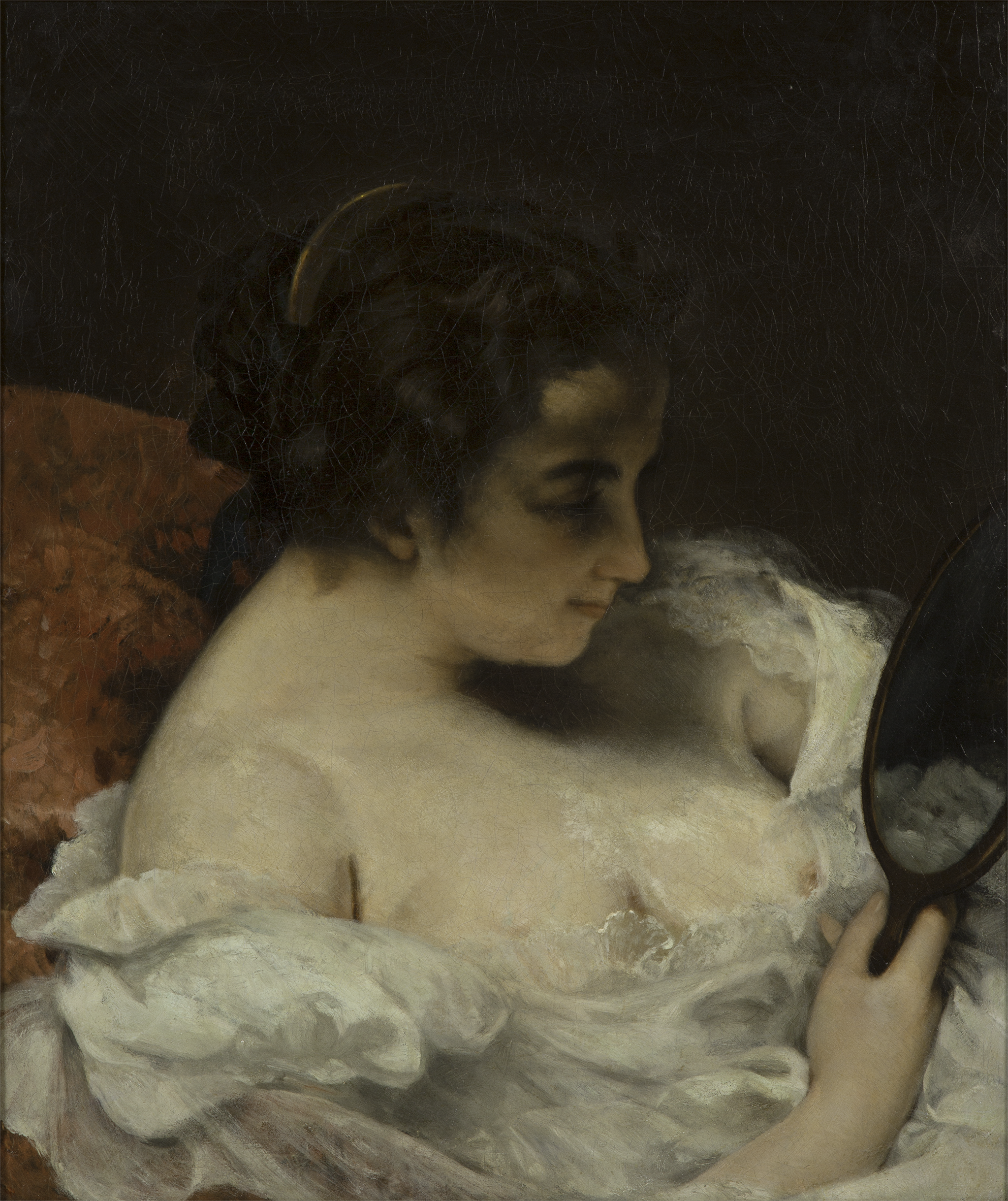 Fig. 4. Gustave Courbet, Woman with a Mirror, 1860, oil on canvas, 25 3/8 x 21 1/4 in. (64.5 x 54 cm), private collection.
Fig. 4. Gustave Courbet, Woman with a Mirror, 1860, oil on canvas, 25 3/8 x 21 1/4 in. (64.5 x 54 cm), private collection.
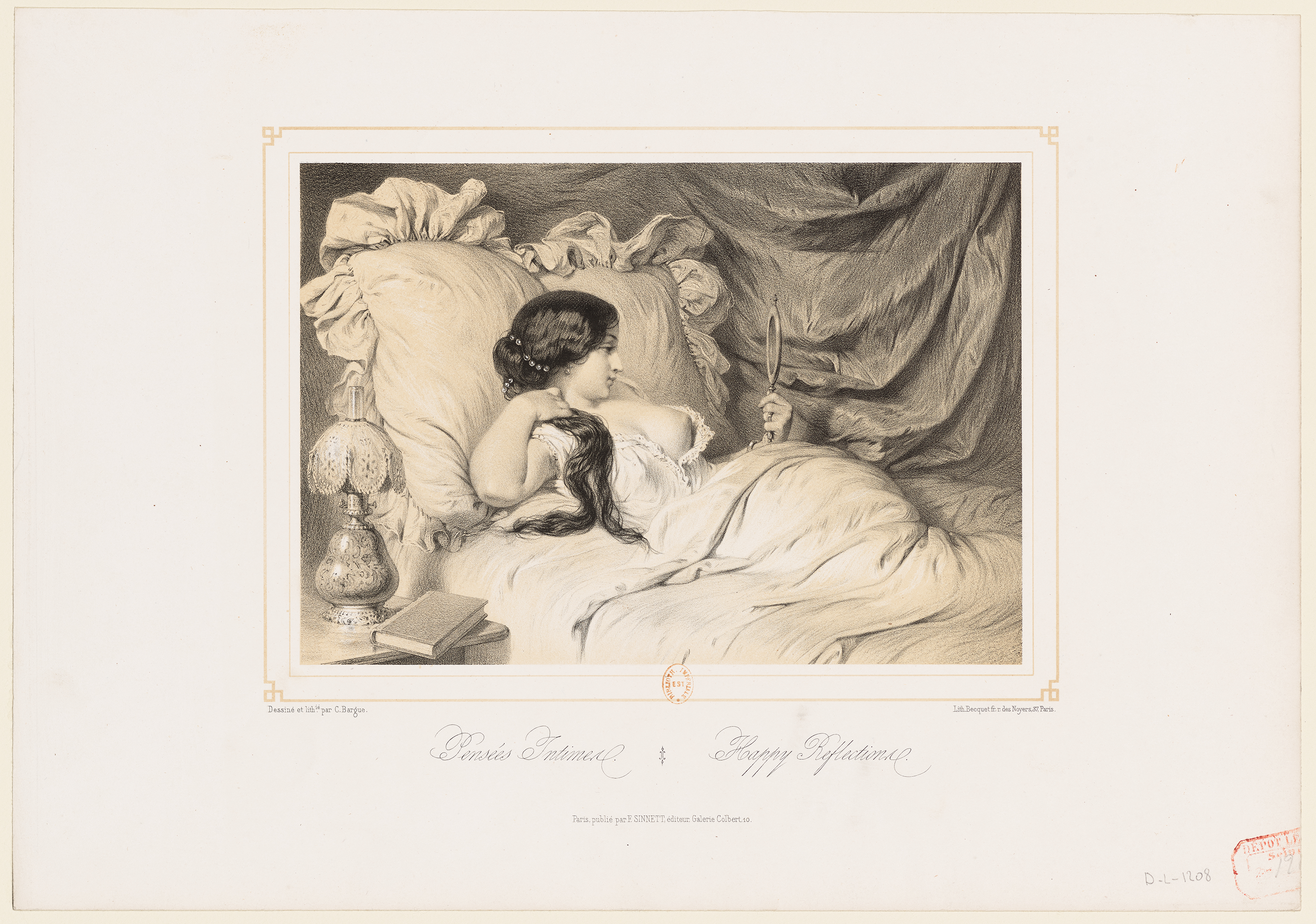 Fig. 5. Charles Bargue (1826–83), Pensées Intimes, 1851, lithograph on paper, image: 7 1/16 x 9 3/4 in. (18 x 24.8 cm); sheet: 11 1/16 x 15 3/4 in. (28.1 x 40 cm), Bibliothèque nationale de France, Département des estampes et de la photographie, Paris. DC-282 (1)-FOL
Fig. 5. Charles Bargue (1826–83), Pensées Intimes, 1851, lithograph on paper, image: 7 1/16 x 9 3/4 in. (18 x 24.8 cm); sheet: 11 1/16 x 15 3/4 in. (28.1 x 40 cm), Bibliothèque nationale de France, Département des estampes et de la photographie, Paris. DC-282 (1)-FOL
Courbet’s incorporation of eighteenth-century imagery in his series of female busts was geared toward the growing market for Rococo-inspired artwork in the mid-1800s, an aspect of the more holistic marketing and exhibition strategy that he developed at that time.14Chu, “Courbet and the Rococo: ‘Packaging’ and Marketing the Female Figure,” 118; Myers, “Courbet and the Realist Nude,” 75–109. Such moderately scaled, subtly sensuous paintings were regularly included with Courbet’s monumental paintings in his self-mounted retrospectives or in group exhibitions such as the SalonsSalon, the: Exhibitions organized by the French Royal Academy of Painting and Sculpture (Académie Royale de Peinture et de Sculpture) and its successor the Academy of Fine Arts (Académie des Beaux Arts), which took place in Paris from 1667 onward. in Paris or in Ghent. Whether positive or negative, the critical reception of his frequently controversial Salon submissions often drove the sales of smaller, more affordable paintings with similar subjects that could be bought directly at exhibitions, made to order, or selected from ready-made stock in the artist’s studio.15Zutter and Chu, Courbet: Artiste et promoteur, 101–27. See also Fabrice Masanès, Gustave Courbet, 1819-1877: The Last of the Romantics (Cologne: Taschen, 2006), 20; and Petra ten-Doesschate Chu, The Most Arrogant Man in France: Gustave Courbet and the Nineteenth-Century Media Culture (Princeton, NJ: Princeton University Press, 2007), 138. It is plausible that Courbet painted the original version of Jo, the Irish Woman in anticipation of the success he intended to achieve at the Paris Salon of 1866 with the exhibition of Woman with a Parrot. As he began the latter sometime in 1865 and completed it in the spring of 1866, it is likely that he worked on both paintings at the same time.16Courbet to the comte de Nieuwerkerke, June 27, 1866, Chu, Letters, letter 66-15, p. 283. Monumental in scale and highly refined, Woman with a Parrot features a languorous nude with pearly skin, shown reclining on a bed, her wavy auburn locks reminiscent of Hiffernan’s. It would become one of Courbet’s most critically acclaimed paintings, attracting buyers from an emerging class of wealthy bankers and dandies eager to acquire pleasing images of female subjects.17These new buyers included a French stockbroker, Michel Lepel-Cointet, and a wealthy Turkish diplomat from Egypt, Khalil-Bey. This context may have created the conditions in which Courbet produced and/or sold the first version of Jo, the Irish Woman, retaining a variant for himself to prompt further sales.
Indeed, by March 1867 a version of Jo and another half-length female bust titled The Dutch Woman were on view in the gallery of the Paris dealer Bardenet.18Bardenet to Courbet, March 21, 1867, Recueil. Papiers de Courbet, YB3-1739 (1)-4, Département des estampes et de la photographie, Bibliothèque nationale de France, Paris. The painting is referred to as La femme Hollandaise. Today the painting is in the collection of the National Museum of Western Art, where it is called Woman with Bared Breast. Frequently confused in the historical record,19Confusion over the identities of these paintings appears as early as the catalogue accompanying Courbet’s estate sale at the Hôtel Drouot. Lot 10 is titled La Belle Hollandaise, but the entry clearly describes Jo, the Irish Woman. Bought at the sale by Hubert Debrousse, this was in fact the Stockholm version of Jo, the Irish Woman. Catalogue de trente-trois tableaux et études par Gustave Courbet et dépendant de sa succession: vente, Hôtel Drouot, salles nos 8 et 9, le vendredi 9 décembre 1881 a trois heures précises; catalogue de tableaux, études, esquisses et dessins par Gustave Courbet, dépendant de sa succession et ayant en partie figuré a l’exposition de l’Ecole de beaux-arts (Paris: Hotel Drouot, December 9, 1881, repr. Paris: Phénix éditions, 1999), 10. See also Isolde Pludermacher’s essay, “La Société des amis des arts: Amateurs et expositions d’art moderne au Havre dans la seconde moitié du XIXe siècle,” in Annette Handiquet and Géraldine Lefebre, Le cercle de l’art moderne: Collectionneurs d’avant-garde au Havre, exh. cat. (Paris: Musée du Luxembourg, 2012), 32–33, 37n42. the two paintings can in fact be seen as a kind of before and after. While Jo, the Irish Woman can be viewed as a Rococo-inspired morning scene associated with the imagery of le lever and la toilette, The Dutch Woman is the erotic evening counterpart reminiscent of le coucher. The picture of Hiffernan at Bardenet’s gallery, which Courbet retrieved in March 1867, was most likely the Stockholm version included in the retrospective he opened on May 30, 1867, at the Rond-Point du Pont de l’Alma. There, it hung alongside several half-length female busts, sparking a vogue for this imagery that stretched into the early 1870s.20Myers, “Courbet and the Realist Nude,” 116–17. Driven by his desire to have a permanent installation of his work, Courbet decided to reopen his exhibition on May 1 the following year.21Patricia Mainardi, Art and Politics of the Second Empire: The Universal Expositions of 1855 and 1867 (New Haven: Yale University Press, 1987), 188, 224n7; “Nouvelles,” La Chronique des arts et de la curiosité, no. 21 (May 24, 1868): 83; and Courbet to Jules Castagnary, [April 28, 1868], letter 68-12, in Chu, Letters, 336, 336n2–3. The Stockholm version of Jo presumably went back on view, generating more interest among collectors.22The painting seems to have remained with Courbet in Paris until the fall of 1868. Although it was once believed that Courbet included Jo, the Irish Woman in the Exposition maritime internationale du Havre in 1868, recent research has revealed that the painting exhibited there was The Dutch Woman. See Pludermacher, “La Société des amis des arts,” 32–33, 37n42. Likewise, Stockholm’s Jo was not included in the 4e Exposition des amis des Beaux-arts de Besançon in 1868, as listed erroneously in Robert Fernier, La vie et l’œuvre de Gustave Courbet: Catalogue raisonné (Lausanne: Bibliothèque des arts, 1978), no. 537, p. 2:12. See Catalogue: Société des amis des Beaux-arts de Besançon (Besançon: Dodivers, 1868), 16. Perhaps this is where the first owner of the Nelson-Atkins painting, the Parisian painter Paul-Désiré Trouillebert (1829–1900), took notice of the composition. Though little is known of the circumstances of Trouillebert’s purchase, by September 19, 1868, he had picked up his version of Jo from Courbet’s Paris studio.23Gustave Chaudey to Courbet, September 19, 1868, in “Trois lettres inédites de Chaudey adressées à Courbet,” Bulletin: Les Amis de Gustave Courbet, no. 50 (1973): 8–9. Trouillebert’s painting must have been completed no later than August 1868, as Courbet left Paris for Le Havre on September 11, and the painting had to be dry enough to be safely transported.
Overall, in comparison to the Stockholm version, the Nelson-Atkins painting is less detailed, as mentioned earlier. The cursory treatment of Hiffernan’s blouse, hair, and proper right hand retains the appearance of spontaneity associated with a sketch, suggesting that the painting was rapidly executed rather than painstakingly reproduced. Indeed, Courbet did not make use of traditional methods such as tracing or a drawn grid to precisely transfer the composition. Rather, he freely painted the composition from the Stockholm model in a confident hand, relying upon a few incised lines in the imprimaturaimprimatura: A thin layer of paint applied over the ground layer to establish an overall tonality. to loosely block in the placement of Hiffernan’s profile and her eyes, nostrils, and lips.24See technical notes by Mary Schafer, NAMA paintings conservator, June 22, 2009, NAMA conservation files. Handling aside, perhaps one of the greatest differences resides in the subtle change Courbet made to her countenance. The model’s expression in both the prime version and first variant is one of intense, even anxious concentration, as suggested by the furrowed brow and subtly downturned mouth.25Faunce, Gustave Courbet, 108. In the Kansas City variant, Hiffernan’s physical and psychological presence is greatly softened, producing a predominant sense of tranquility.
It is important to note that the surface appearance of the Nelson-Atkins painting has been greatly altered in certain areas of the composition. Prior to the Museum’s acquisition in 1932, the canvas was punctured in the middle of the composition. The resulting Y-shaped tear extends into Hiffernan’s chin, jawline, and the hair that envelops the left side of her face. In addition to areas of loss associated with the tear, a past overcleaning stripped the midtones and highlights from substantial areas of hair and the proper right side of the figure’s face, producing a flattened and distorted effect. A significant and sensitive restoration campaign, completed in 2015 by Mary Schafer, Nelson-Atkins painting conservator, resulted in the successful reconstruction of lost and damaged elements, returning a sense of depth, subtlety, and volume to the painting.26See painting report of examination, May 15, 2002, and painting technical record of treatment, February 2, 2015, by Mary Schafer, NAMA paintings conservator, NAMA conservation files. Schafer’s study and treatment of this painting from 2012 to 2015 was undertaken in close collaboration with this essay’s author during her tenure at the Nelson-Atkins Museum of Art as associate curator of European Painting and Sculpture.
Despite these past damages, what remains of Courbet’s original handling of hair and skin reveals the genius for which he is known. Using a technique learned from studying Old Master paintings, Courbet began by covering the white-primed canvas with a reddish-brown imprimatura that gives an overall warmth to the palette and, when left exposed, serves as a midtone in areas such as Hiffernan’s hair. Employing a variety of brushes and his trademark palette knife, Courbet constructed forms by applying thin layers of paint in a limited range of colors. To render Hiffernan’s pale complexion, he used a blue-gray undertone to suggest both contours and delicate veins running beneath her translucent skin. It is Courbet’s Realism—his unrivaled ability to render the appearance of living, breathing skin and touchable, silky hair—that ultimately makes his figures so desirable.
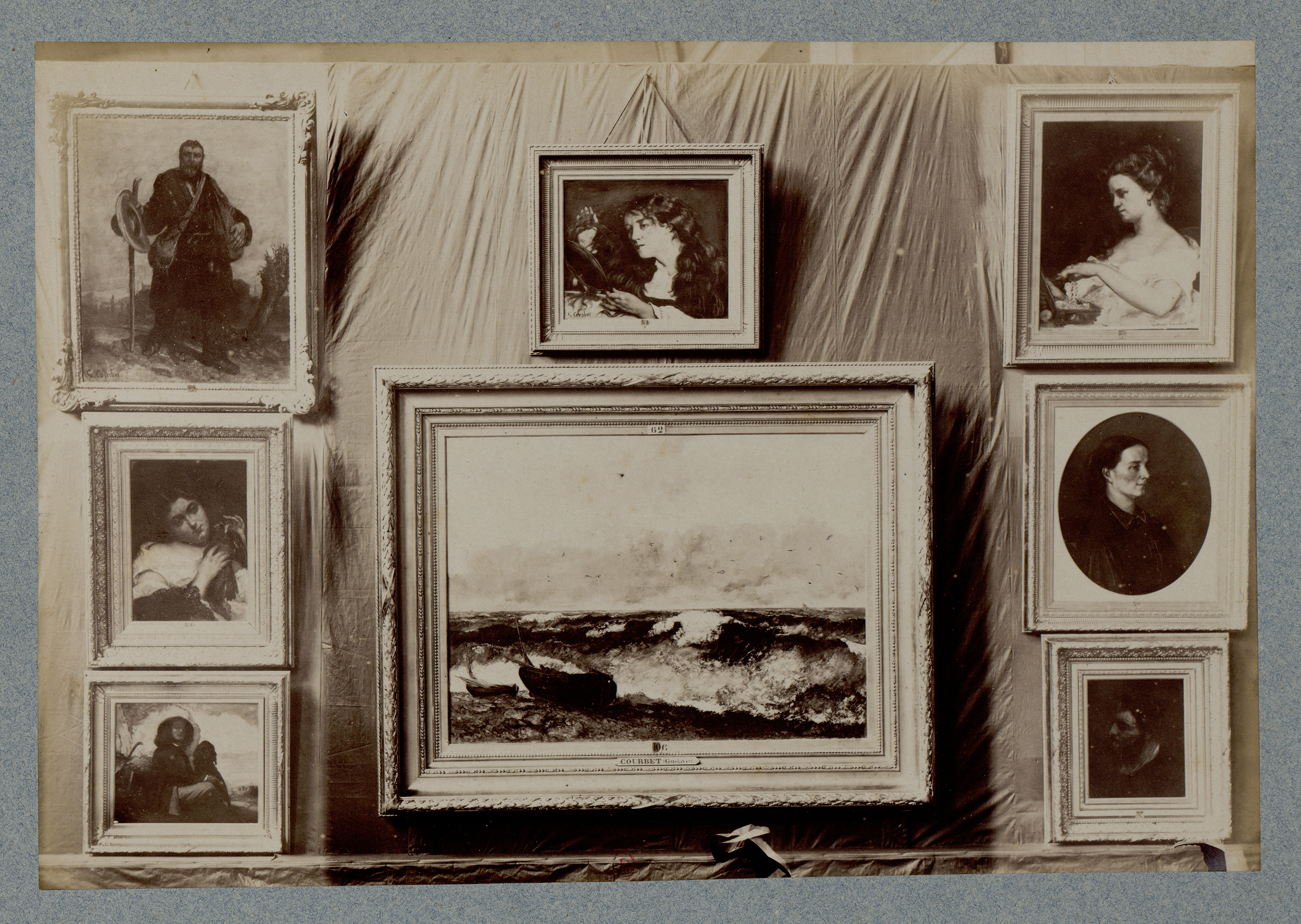
Notes
-
Pierre Borel, Lettres de Gustave Courbet à Alfred Bruyas (Geneva: Pierre Cailler, 1951), 116n1. English translation from Gary Tinterow et al., Gustave Courbet, exh. cat. (New York: Metropolitan Museum of Art, 2008), 332–33.
-
Joanna Hiffernan’s family name appears frequently misspelled in Courbet scholarship as both Heffernan and Hifferman. Following the publication of Margaret Macdonald et al., The Woman in White: Joanna Hiffernan and James McNeill Whistler, exh. cat. (Washington, DC: National Gallery of Art, 2020), and the extensive research done by those authors, this catalogue’s editors updated Hiffernan’s life dates from “b. 1842/43” to “(1839–1886).” This change was made July 29, 2022.
-
Courbet to James Abbott McNeill Whistler, February 14, 1877, letter 77-9, in Petra ten-Doesschate Chu, ed. and trans., Letters of Gustave Courbet (Chicago: University of Chicago Press, 1992), 601.
-
See Exposition des Œuvres de M. G. Courbet, exh. cat. (Paris: Lebigre-Duquesne Frères, 1867), no. 91, as La Jo, femme d’Irlande (Trouville, 1866) [repr., in Theodore Reff, ed., Modern Art in Paris: Two-Hundred Catalogues of the Major Exhibitions Reproduced in Facsimile in Forty-Seven Volumes, vol. 38, Exhibitions of Realist Art I (New York: Garland, 1981), unpaginated].
-
Throughout this essay, the four paintings of Jo, the Irish Woman are referred to as versions or variants, as they are not exact copies or replicas in the strictest sense of the terms.
-
Sarah Faunce can be credited with the proposed sequencing of the four versions. See Sarah Faunce, Gustave Courbet (New York: Harry N. Abrams, 1993), 108, and 19th Century European Paintings and Sculpture (New York: Sotheby’s, November 2, 2001), 118–21.
-
Courbet may have done this with other portraits begun in Trouville, such as those of the Nodler brothers that he described in fall 1865. Like his painting of Hiffernan, when Courbet exhibited them in his 1867 private exhibition, they appear in the catalogue with the caption “Trouville, 1866.” See note 4 and Exposition des Œuvres de M. G. Courbet, 20.
-
See Petra ten-Doesschate Chu’s essay, “Courbet and the Rococo: ‘Packaging’ and Marketing the Female Figure,” in Juerg Albrecht and Kornelia Imesch, eds., Horizonte: Beiträge zu Kunst und Kunstwissenschaft (Ostfildern-Ruit, Germany: Hatje Cantz Verlag, 2001), 117.
-
Jörg Zutter and Petra ten-Doesschate Chu, Courbet: Artiste et promoteur de son œuvre, exh. cat. (Paris: Flammarion, 1998), 142–43; Tinterow et al., Gustave Courbet, 325.
-
On Courbet and the Rococo, see Nicole Myers, “Courbet and the Realist Nude” (PhD diss., Institute of Fine Arts, New York University, 2015), especially chapters 1 and 2.
-
See Beatrice Farwell’s essay in Thomas B. Hess and Linda Nochlin, eds., Woman as Sex Object: Studies in Erotic Art, 1730–1970 (London: Allen Lane, 1973), 65–79.
-
Beatrice Farwell, The Cult of Images: Baudelaire and the 19th-Century Media Explosion (Santa Barbara: University of California, 1977), 101–02, 111–12.
-
See Myers, “Courbet and the Realist Nude,” especially chapters 1 and 2.
-
Chu, “Courbet and the Rococo: ‘Packaging’ and Marketing the Female Figure,” 118; Myers, “Courbet and the Realist Nude,” 75–109.
-
Zutter and Chu, Courbet: Artiste et promoteur, 101–27. See also Fabrice Masanès, Gustave Courbet, 1819–1877: The Last of the Romantics (Cologne: Taschen, 2006), 20; and Petra ten-Doesschate Chu, The Most Arrogant Man in France: Gustave Courbet and the Nineteenth-Century Media Culture (Princeton, NJ: Princeton University Press, 2007), 138.
-
Courbet to the comte de Nieuwerkerke, June 27, 1866, Chu, Letters, letter 66-15, p. 283.
-
These new buyers included a French stockbroker, Michel Lepel-Cointet, and a wealthy Turkish diplomat from Egypt, Khalil-Bey.
-
Bardenet to Courbet, March 21, 1867, Recueil. Papiers de Courbet, YB3-1739 (1)-4, Département des estampes et de la photographie, Bibliothèque nationale de France, Paris. The painting is referred to as La femme Hollandaise. Today the painting is in the collection of the National Museum of Western Art, where it is called Woman with Bared Breast.
-
Confusion over the identities of these paintings appears as early as the catalogue accompanying Courbet’s estate sale at the Hôtel Drouot. Lot 10 is titled La Belle Hollandaise, but the entry clearly describes Jo, the Irish Woman. Bought at the sale by Hubert Debrousse, this was in fact the Stockholm version of Jo, the Irish Woman. Catalogue de trente-trois tableaux et études par Gustave Courbet et dépendant de sa succession: vente, Hôtel Drouot, salles nos 8 et 9, le vendredi 9 décembre 1881 a trois heures précises; catalogue de tableaux, études, esquisses et dessins par Gustave Courbet, dépendant de sa succession et ayant en partie figuré a l’exposition de l’Ecole de beaux-arts (Paris: Hotel Drouot, December 9, 1881, repr. Paris: Phénix éditions, 1999), 10. See also Isolde Pludermacher’s essay, “La Société des amis des arts: Amateurs et expositions d’art moderne au Havre dans la seconde moitié du XIXe siècle,” in Annette Handiquet and Géraldine Lefebre, Le cercle de l’art moderne: Collectionneurs d’avant-garde au Havre, exh. cat. (Paris: Musée du Luxembourg, 2012), 32–33, 37n42.
-
Myers, “Courbet and the Realist Nude,” 116–17.
-
Patricia Mainardi, Art and Politics of the Second Empire: The Universal Expositions of 1855 and 1867 (New Haven: Yale University Press, 1987), 188, 224n7; “Nouvelles,” La Chronique des arts et de la curiosité, no. 21 (May 24, 1868): 83; and Courbet to Jules Castagnary, [April 28, 1868], letter 68-12, in Chu, Letters, 336, 336n2–3.
-
The painting seems to have remained with Courbet in Paris until the fall of 1868. Although it was once believed that Courbet included Jo, the Irish Woman in the Exposition maritime internationale du Havre in 1868, recent research has revealed that the painting exhibited there was The Dutch Woman. See Pludermacher, “La Société des amis des arts,” 32–33, 37n42. Likewise, Stockholm’s Jo was not included in the 4e Exposition des amis des Beaux-arts de Besançon in 1868, as listed erroneously in Robert Fernier, La vie et l’œuvre de Gustave Courbet: Catalogue raisonné (Lausanne: Bibliothèque des arts, 1978), no. 537, p. 2:12. See Catalogue: Société des amis des Beaux-arts de Besançon (Besançon: Dodivers, 1868), 16.
-
Gustave Chaudey to Courbet, September 19, 1868, in “Trois lettres inédites de Chaudey adressées à Courbet,” Bulletin: Les Amis de Gustave Courbet, no. 50 (1973): 8–9. Trouillebert’s painting must have been completed no later than August 1868, as Courbet left Paris for Le Havre on September 11, and the painting had to be dry enough to be safely transported.
-
See technical notes by Mary Schafer, NAMA paintings conservator, June 22, 2009, NAMA conservation files.
-
Faunce, Gustave Courbet, 108.
-
See painting report of examination, May 15, 2002, and painting technical record of treatment, February 2, 2015, by Mary Schafer, NAMA paintings conservator, NAMA conservation files. Schafer’s study and treatment of this painting from 2012 to 2015 was undertaken in close collaboration with this essay’s author during her tenure at the Nelson-Atkins Museum of Art as associate curator of European Painting and Sculpture.
-
The Nelson-Atkins version is listed as no. 51 in the catalogue as belonging to “Mme Veuve Trouillebert.” Exposition des œuvres de G. Courbet à l’École des beaux-arts, exh. cat. (Paris: Émile Martinet, 1882), 51.
-
In 19th Century European Paintings (2001), 121, Jean-Jacques Fernier is cited as questioning whether the version included in the 1882 exhibition was the Kansas City painting and whether the Trouillebert provenance was assigned to the correct picture. Cheron’s installation shot resolves any outstanding doubts.
-
The Stockholm version was lent by Hubert Debrousse, who bought the painting for 8,000 francs in 1881; the sale is recorded in Paul Eudel, L’Hôtel Drouot en 1881 (Paris: G. Charpentier, 1882), 384. It appears in the supplement to the 1882 catalogue as no. 162, Jo, femme d’Irlande (lent by Debrousse). Exposition des œuvres de G. Courbet à l’École des beaux-arts, Supplement, 7. See also note 28, above.
-
Chu, Letters, 602n2. Courbet had gone into self-imposed exile in 1873 after being sentenced to pay roughly 323,000 francs for the reconstruction of the Vendôme Column.
-
Courbet to James Abbott McNeill Whistler, February 14, 1877, letter 77-9, in Chu, Letters, 601.
Technical Entry
Citation
Chicago:
Mary Schafer, “Gustave Courbet, Jo, the Irish Woman, ca. 1866–68,” technical entry in ed. Aimee Marcereau DeGalan French Paintings and Pastels, 1600–1945: The Collections of the Nelson-Atkins Museum of Art (Kansas City: The Nelson-Atkins Museum of Art, 2021), https://doi.org/10.37764/78973.5.506.2088
MLA:
Schafer, Mary. “Gustave Courbet, Jo, the Irish Woman, ca. 1866–68,” technical entry. French Paintings and Pastels, 1600–1945: The Collections of the Nelson-Atkins Museum of Art, edited by Aimee Marcereau DeGalan, The Nelson-Atkins Museum of Art, 2021. doi: 10.37764/78973.5.506.2088.
Among the four versions that Gustave Courbet (1819–77) painted of Joanna (Jo) Hiffernan (b. 1842/43), Jo, the Irish Woman is considered to be either the third or fourth painting in the sequence, executed quickly and likely on commission.1Sarah Faunce, Gustave Courbet (New York: Harry N. Abrams, 1993), 108; 19th-Century European Paintings and Sculpture (New York: Sotheby’s, November 2, 2001), 120. For an overview of the sequence and a description of the variation that exists among the four paintings of Jo, see the accompanying curatorial essay by Nicole R. Myers. While the other versions of Jo are well-preserved, there is a significant amount of retouchingretouching: Paint application by a conservator or restorer to cover losses and unify the original composition. Retouching is an aspect of conservation treatment that is aesthetic in nature and that differs from more limited procedures undertaken solely to stabilize original material. Sometimes referred to as inpainting or retouch. present on the Nelson-Atkins painting due to a large, central tear repair and extensive paint abrasionabrasion: A loss of surface material due to rubbing, scraping, frequent touching, or inexpert solvent cleaning.. The amount of non-original paint on the surface of Jo, the Irish Woman is readily apparent in the ultraviolet-induced visible fluorescenceultraviolet (UV) fluorescence or UV-induced visible fluorescence: The reflected visible light produced when painting materials interact with ultraviolet (UV) radiation. Not all materials fluoresce, but the color and intensity of the fluorescence is frequently used to differentiate between original and restoration materials, characterize the varnish layers, or reveal the distribution of pigments across the composition. photograph of Figure 7, in which the retouching material appears very dark in color.
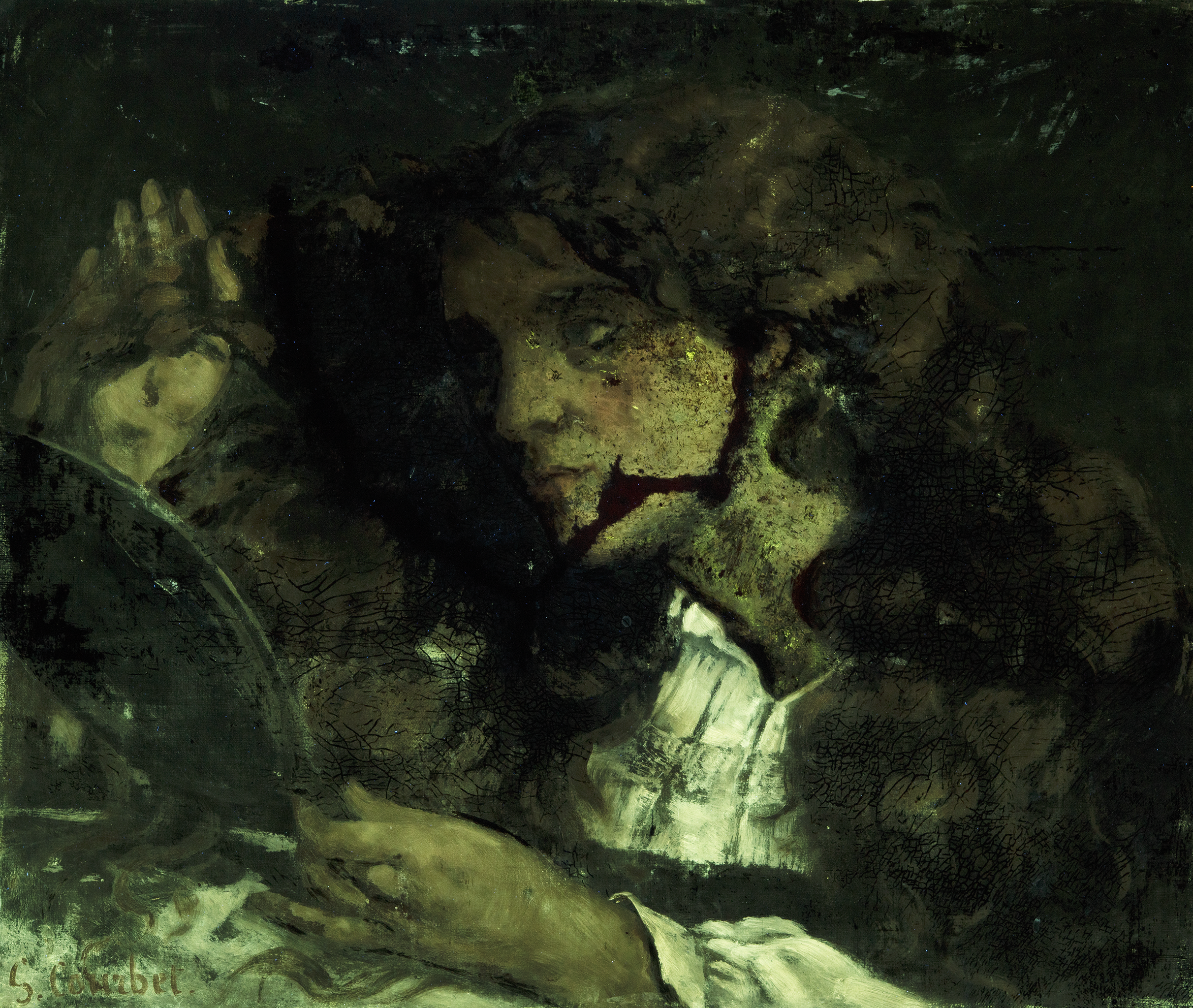
figure standard-format canvasstandard-format supports: Commercially prepared supports available through art suppliers, which gained popularity in the nineteenth century during the industrialization of art materials. Available in three formats figure (portrait), paysage (landscape), and marine (marine), these were numbered 1 through 120 to indicate their size. For each numbered size, marine and paysage had two options available: a larger format (haute) and smaller (basse) format. and may be original.2David Bomford, Jo Kirby, John Leighton, and Ashok Roy, Art in the Making: Impressionism (London: Yale University Press, 1991), 45. Although the tacking marginstacking margins: The outer edges of canvas that wrap around and are attached to the stretcher or strainer with tacks or staples. See also tacking edge. were removed, the dimensions of the painting do not appear to have been substantially altered. RadiographyX-ray radiography (also referred to as x-radiography or radiography): Radiography is an examination tool analogous to the use of X-rays in medicine whereby denser components of a painted composition can be recorded as an inverted shadow image cast on film or a digital X-ray imaging plate from a source such as an X-ray tube. The method has been used for more than a century and is most effective with dense pigments incorporating metallic elements such as lead or zinc. It can reveal artist changes, underlying compositions, and information concerning the artwork’s construction and condition. The resulting image is called an x-radiograph or radiograph. It differs from the uses of X-ray spectrometry in being dependent on the density of the paint to absorb X-rays before they reach the film or image plate and being non-specific as to which elements are responsible for the resulting shadow image. reveals a cuspingcusping: A scalloped pattern along the canvas edges that relates to how the canvas was stretched. Primary cusping reveals where tacks secured the canvas to the support while the ground layer was applied. Secondary cusping can form when a pre-primed canvas is re-stretched by the artist prior to painting. pattern at the perimeter of all four edges, and the current dimensions of the painting are consistent with those of the other versions.3See x-radiograph film, no. 442, Nelson-Atkins conservation file, no. 32-30. The radiograph also reveals numerous slubs and irregularities in the canvas, a common feature among Courbet’s canvas supports.4Stéphanie Constantin, “The Painters of the Barbizon Circle and Landscape Paintings: Techniques and Working Methods” (PhD diss., Courtauld Institute of Art, 2001), 147. Constantin notes that Courbet’s canvases were often of poor quality “with missing stitches, threads of irregular thickness, knots, and irregularities, as in The Mill at Orbe (1865-70), NMGW, Cardiff).”
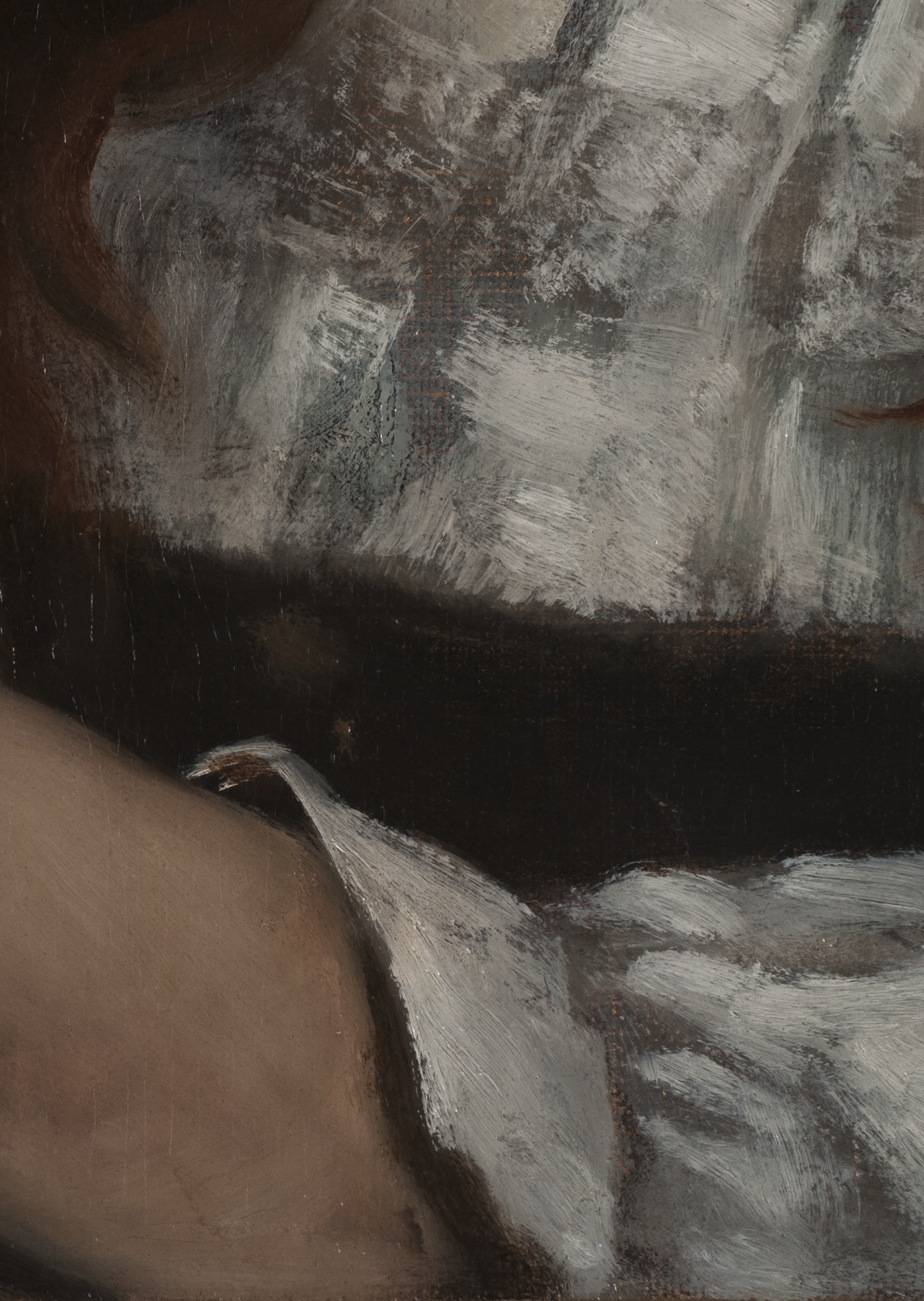 Fig. 8. Detail of the blouse and sleeve of Jo, the Irish Woman (ca. 1866–68), showing glimpses of the reddish-brown imprimatura and light gray underpainting
Fig. 8. Detail of the blouse and sleeve of Jo, the Irish Woman (ca. 1866–68), showing glimpses of the reddish-brown imprimatura and light gray underpainting
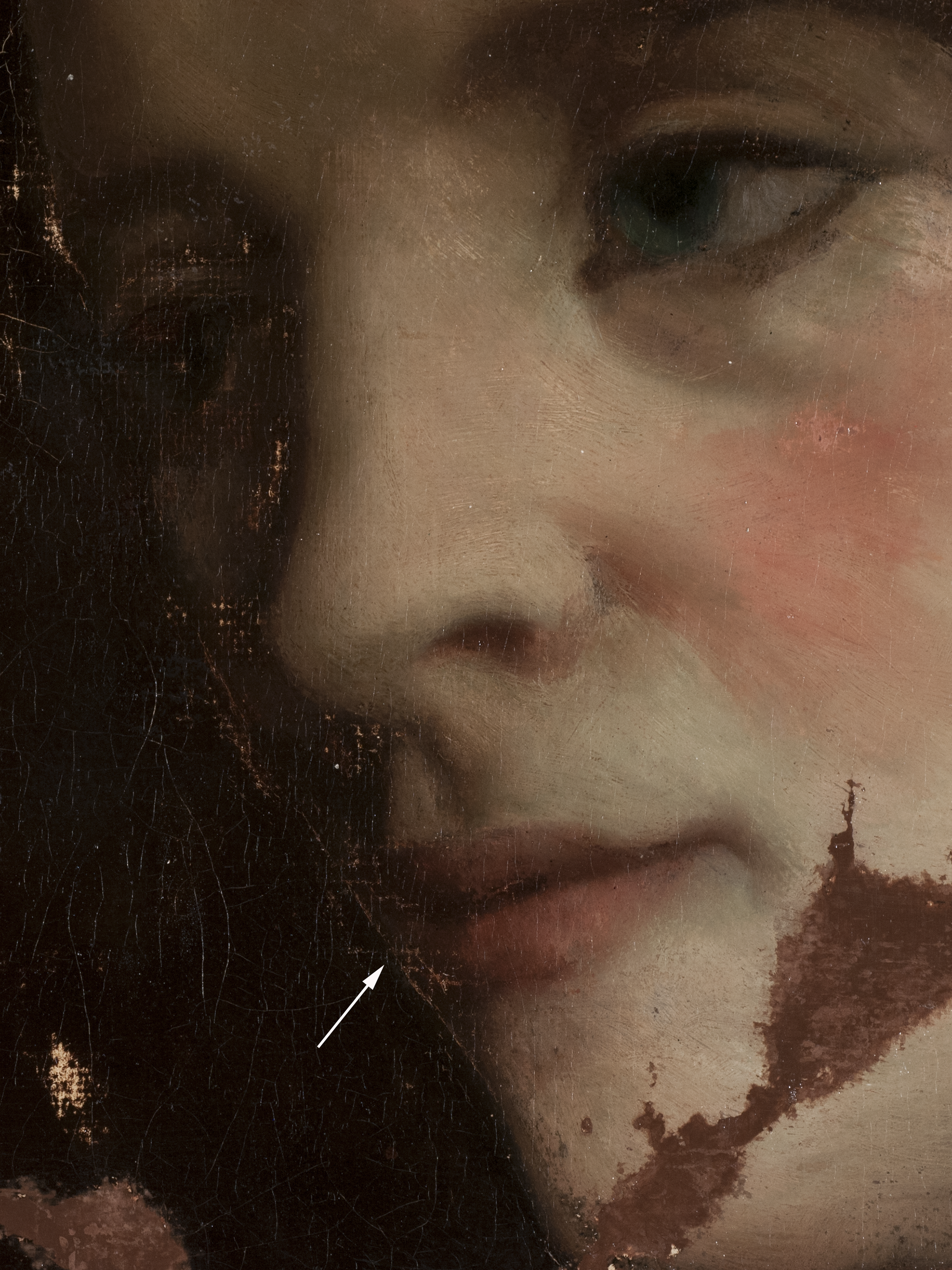 Fig. 9. Detail of an incised line along the contour of the sitter’s face, Jo, the Irish Woman (ca. 1866–68). This image was captured during the 2012 treatment.
Fig. 9. Detail of an incised line along the contour of the sitter’s face, Jo, the Irish Woman (ca. 1866–68). This image was captured during the 2012 treatment.
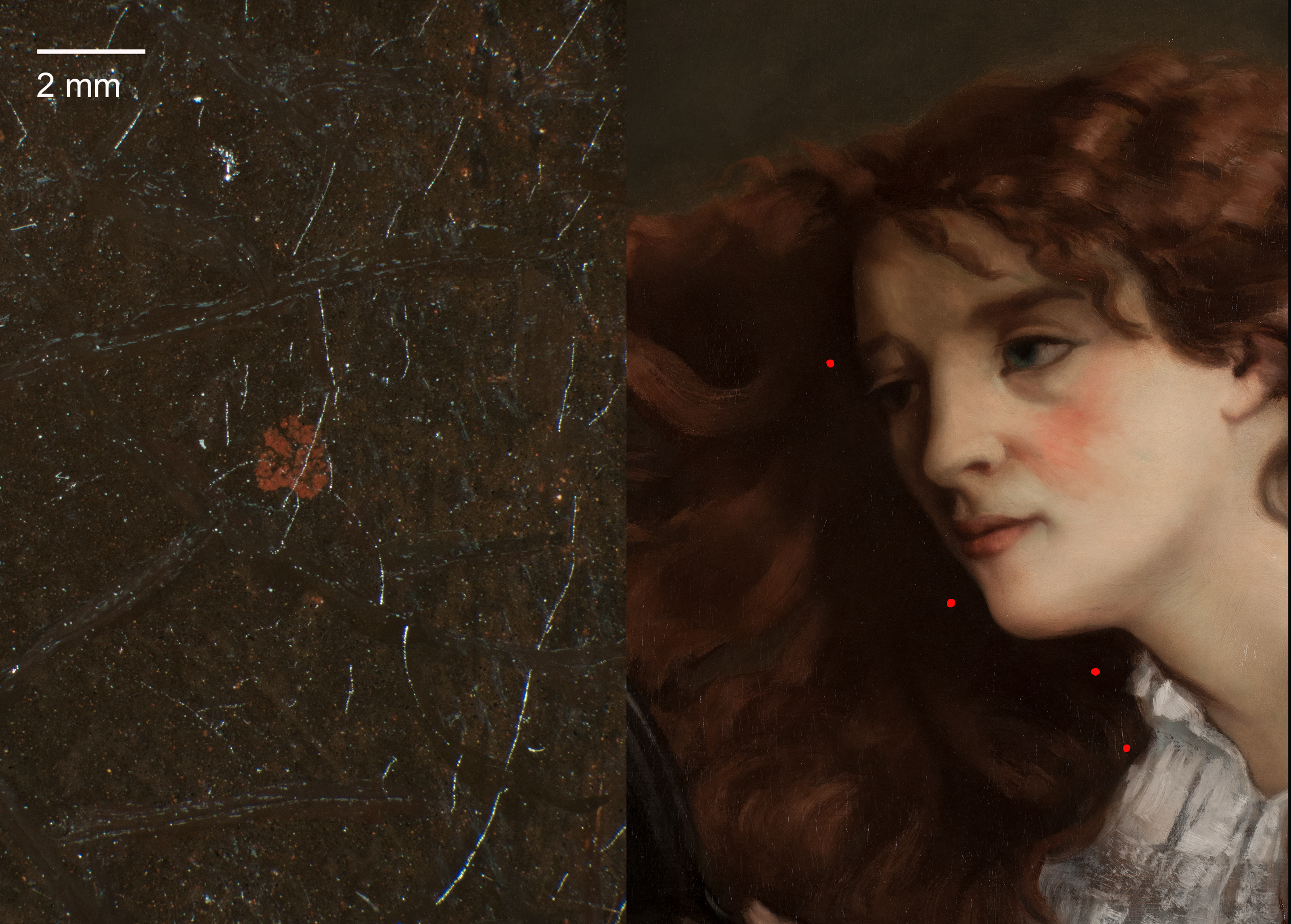
Over the reddish-brown imprimatura, Courbet laid in the upper background with gray-green paint and a palette knife, eventually modifying this color with a thin overlying layer of dark green, applied by brush. The characteristic marks associated with a palette knife remain visible above Hiffernan’s head and in the upper right corner. Hiffernan’s blouse was also underpaintedunderpainting: The first applications of paint that begin to block in color and loosely define the compositional elements. Also called ébauche. with light gray paint, some of which the artist scraped with his palette knife, and in doing so, exposed the reddish-brown imprimatura at the high points of the canvas weave texture (Fig. 8).
Wet-over-wetwet-over-wet: An oil painting technique which involves drawing a stroke of one color across the wet paint of another color. painting and broad, energetic brushwork indicate that Jo, the Irish Woman was executed quickly. Paint application varies across the surface, ranging from thin scumblesscumble: A thin layer of opaque or semi-opaque paint that partially covers and modifies the underlying paint. to somewhat thicker paint with a fluid paste consistency. Overlapping paint strokes between the background and hair indicate that these elements were painted concurrently. Courbet blocked in the general shape of Hiffernan’s curling locks of hair with loose, confident strokes of medium and dark brown paint. Using a ½” wide brush, he added a series of short curving parallel strokes, forming blocks of mid-tones and highlights that create volume and the appearance of soft undulating curls.
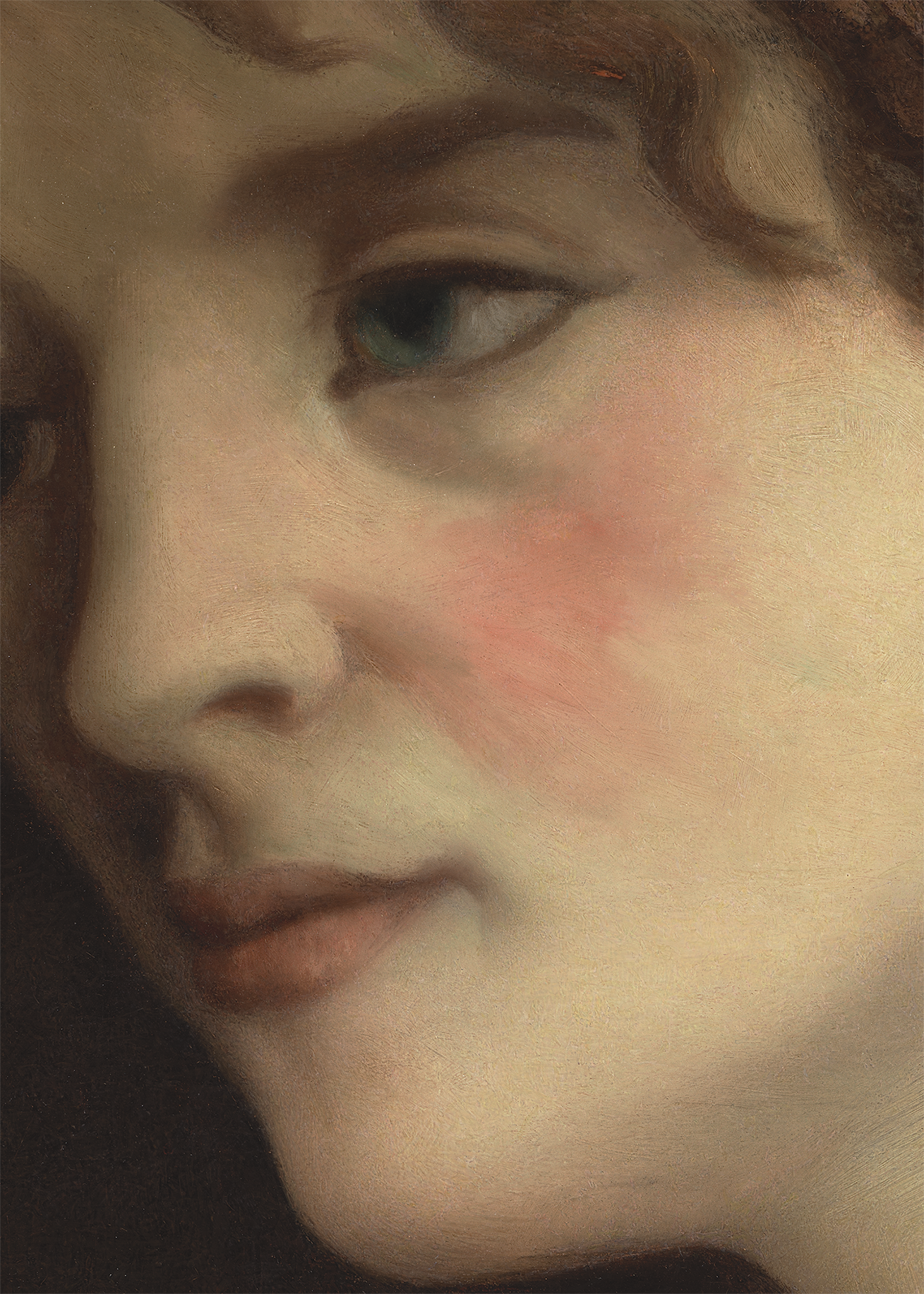 Fig. 11. Detail of the sitter’s face, Jo, the Irish Woman (ca. 1866–68)
Fig. 11. Detail of the sitter’s face, Jo, the Irish Woman (ca. 1866–68)
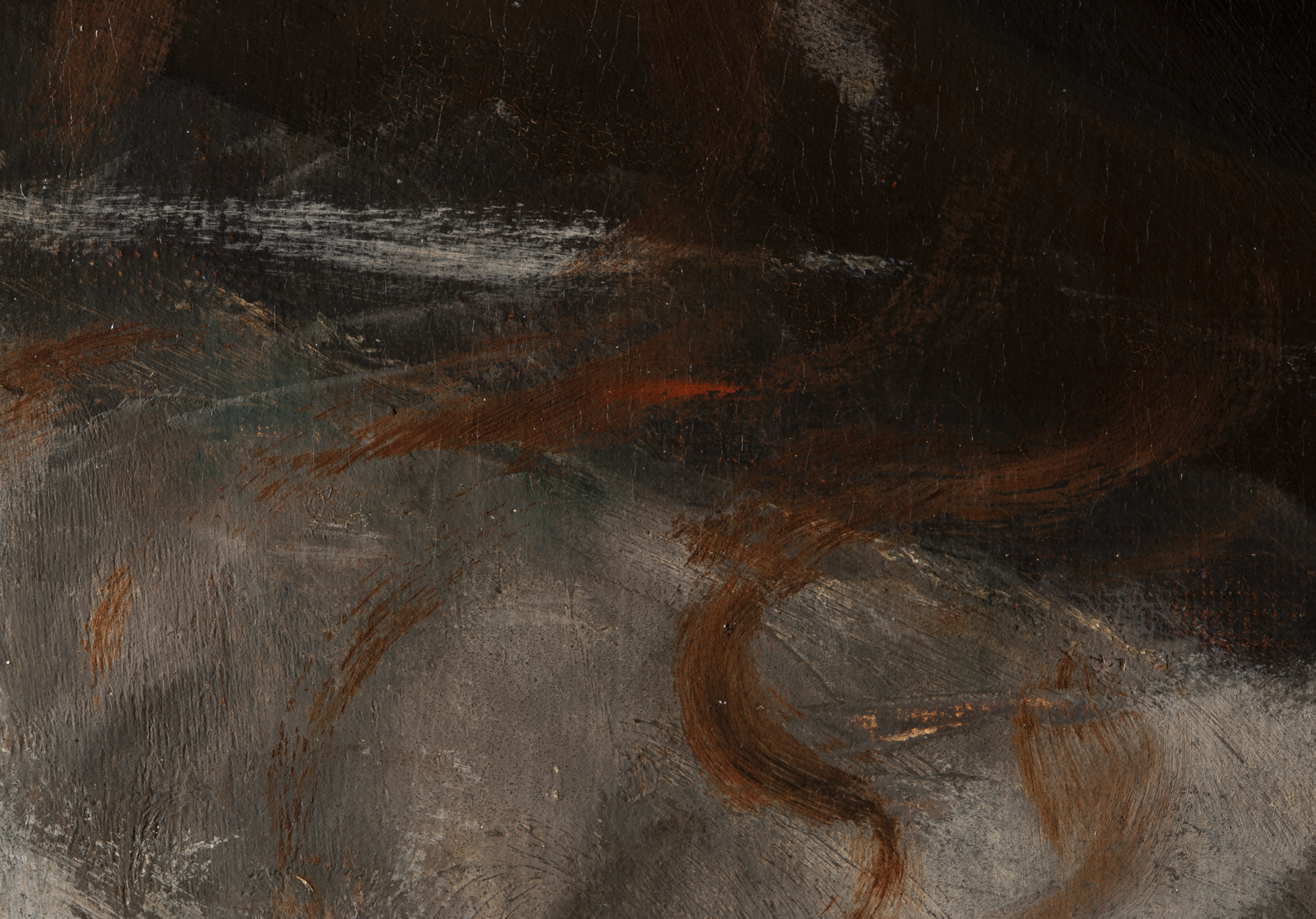 Fig. 12. Raking illumination detail of the table in Jo, the Irish Woman (ca. 1866–68), showing gouges in the wet paint and linear marks that were formed by a palette knife
Fig. 12. Raking illumination detail of the table in Jo, the Irish Woman (ca. 1866–68), showing gouges in the wet paint and linear marks that were formed by a palette knife
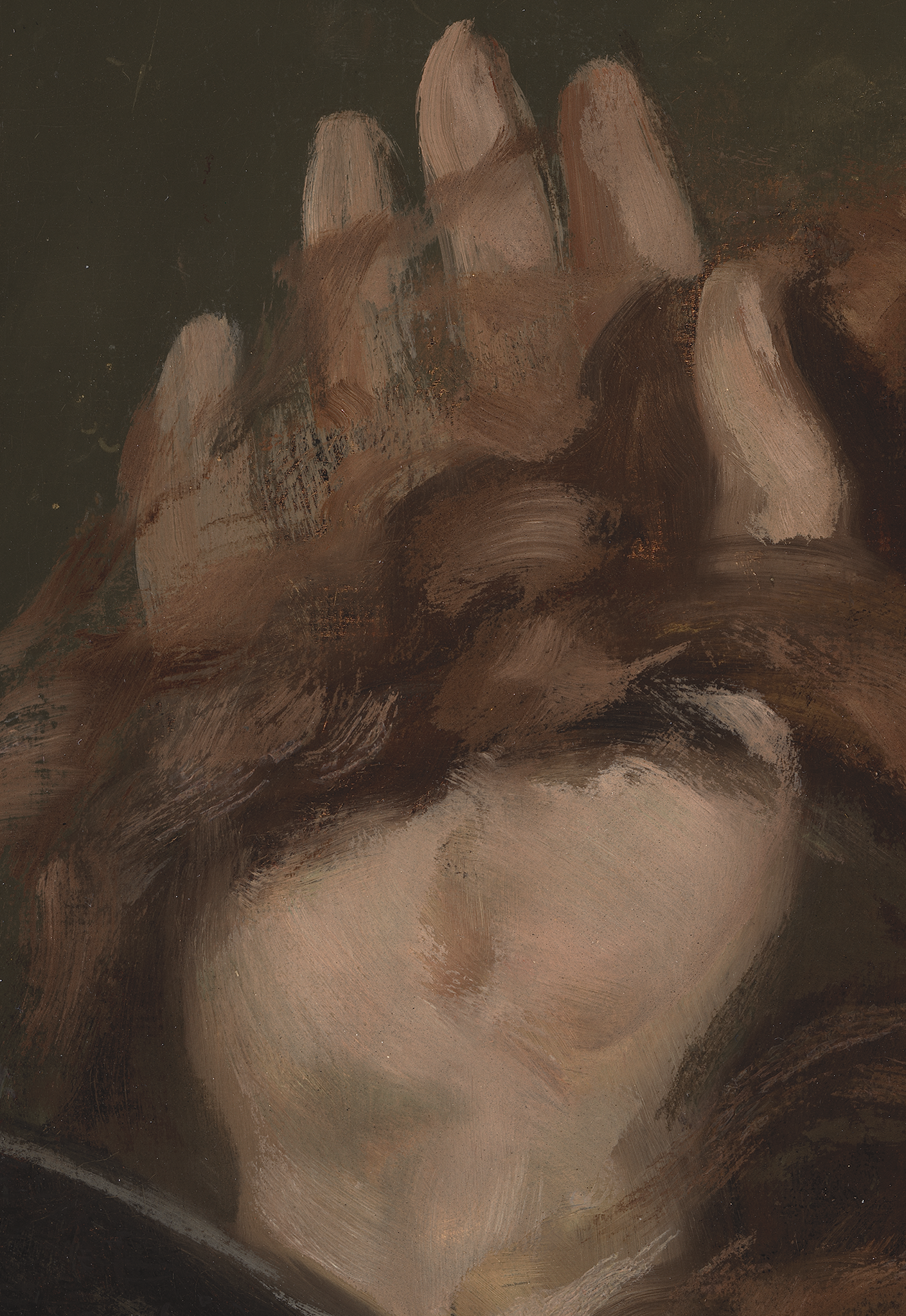 Fig. 13. Detail of the raised hand of Jo, the Irish Woman (ca. 1866–68)
Fig. 13. Detail of the raised hand of Jo, the Irish Woman (ca. 1866–68)
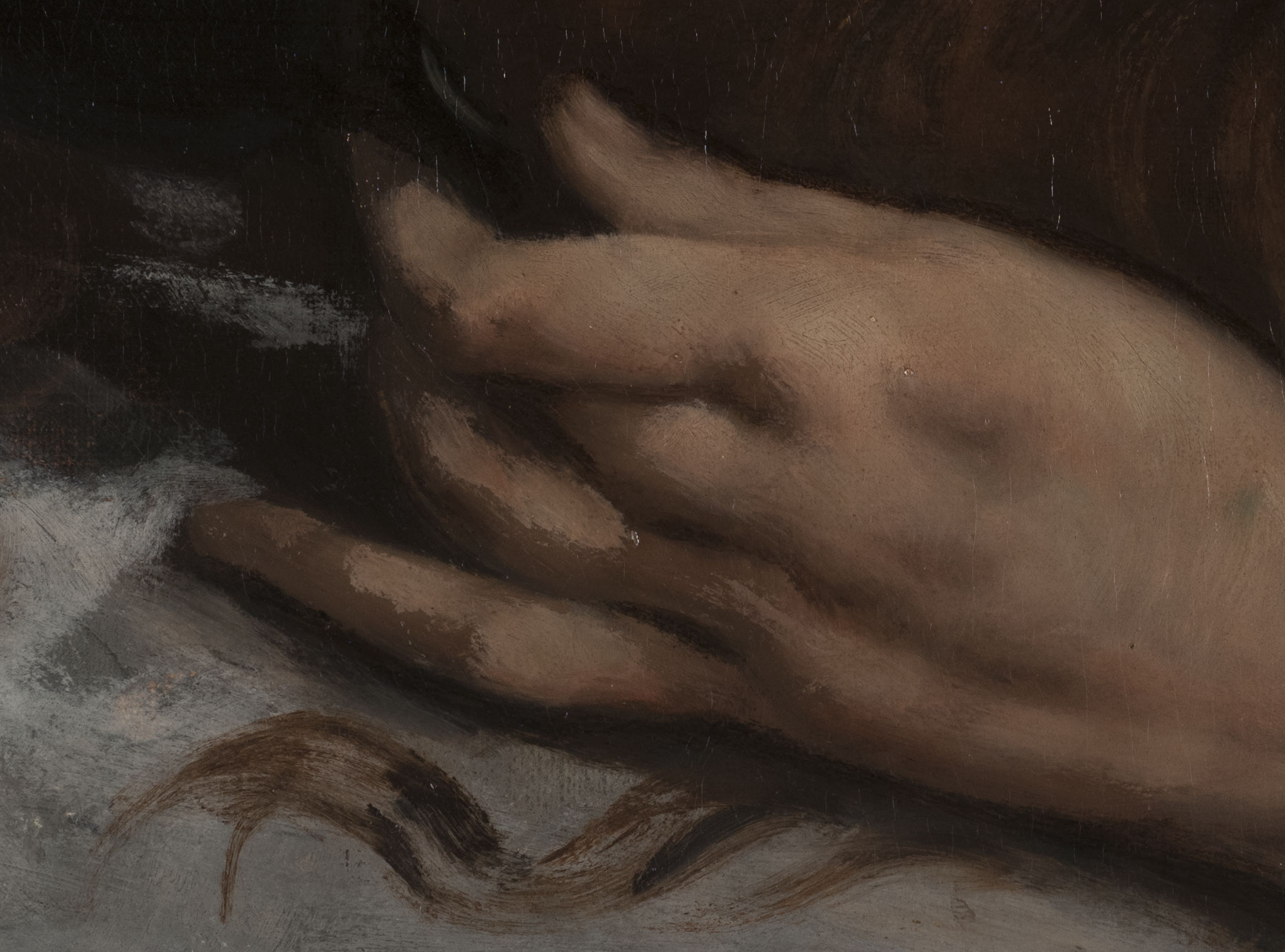 Fig. 14. Detail of the proper left hand of Jo, the Irish Woman (ca. 1866–68)
Fig. 14. Detail of the proper left hand of Jo, the Irish Woman (ca. 1866–68)
Notes
-
Sarah Faunce, Gustave Courbet (New York: Harry N. Abrams, 1993), 108; 19th-Century European Paintings and Sculpture (New York: Sotheby’s, November 2, 2001), 120. For an overview of the sequence and a description of the variation that exists among the four paintings of Hiffernan, see the accompanying curatorial essay by Nicole R. Myers.
-
David Bomford, Jo Kirby, John Leighton, and Ashok Roy, Art in the Making: Impressionism (London: Yale University Press, 1991), 45.
-
See x-radiograph film, no. 442, Nelson-Atkins conservation file, 32-30.
-
Stéphanie Constantin, “The Painters of the Barbizon Circle and Landscape Paintings: Techniques and Working Methods” (PhD diss., Courtauld Institute of Art, 2001), 147. Constantin notes that Courbet’s canvases were often of poor quality “with missing stitches, threads of irregular thickness, knots, and irregularities, as in The Mill at Orbe (1865–1870), NMGW, Cardiff).”
-
Many of the incised lines are evident with infrared reflectography using the Hamamatsu vidicon camera.
-
Mary Schafer, February 2, 2015, treatment report, Nelson-Atkins conservation file, no. 32-30.
-
Forrest R. Bailey, conservator of paintings, to Roger Ward, curator of European art, July 14, 1988, Nelson-Atkins conservation file, 32-30.
-
Imagery related to the other versions was generously provided by Kenneth S. Moser and Richard Este (Brooklyn Museum); Charlotte Hale (Metropolitan Museum of Art); Britta Nilsson (National Museum of Stockholm); and Seth Armitage and Polly Satori (Sotheby’s).
Documentation
Citation
Chicago:
Glynnis Napier Stevenson, “Gustave Courbet, Jo, the Irish Woman, ca. 1866–68,” documentation in ed. Aimee Marcereau DeGalan French Paintings and Pastels, 1600–1945: The Collections of the Nelson-Atkins Museum of Art (Kansas City: The Nelson-Atkins Museum of Art, 2021), https://doi.org/10.37764/78973.5.506.4033
MLA:
Stevenson, Glynnis Napier. “Gustave Courbet, Jo, the Irish Woman, ca. 1866–68,” documentation. French Paintings and Pastels, 1600–1945: The Collections of the Nelson-Atkins Museum of Art, edited by Aimee Marcereau DeGalan, The Nelson-Atkins Museum of Art, 2021. doi: 10.37764/78973.5.506.4033.
Provenance
Citation
Chicago:
Glynnis Napier Stevenson, “Gustave Courbet, Jo, the Irish Woman, ca. 1866–68,” documentation in ed. Aimee Marcereau DeGalan French Paintings and Pastels, 1600–1945: The Collections of the Nelson-Atkins Museum of Art (Kansas City: The Nelson-Atkins Museum of Art, 2021), https://doi.org/10.37764/78973.5.506.4033
MLA:
Stevenson, Glynnis Napier. “Gustave Courbet, Jo, the Irish Woman, ca. 1866–68,” documentation. French Paintings and Pastels, 1600–1945: The Collections of the Nelson-Atkins Museum of Art, edited by Aimee Marcereau DeGalan, The Nelson-Atkins Museum of Art, 2021. doi: 10.37764/78973.5.506.4033.
Purchased from the artist, through Gustave Chaudey (1817–71), by Paul-Désiré Trouillebert (1831–1900), Paris, by September 19, 1868–1900 [1];
Possibly inherited by his wife, Marie-Joséphine Trouillebert (née Lambert, 1845–1921), Paris, June 28, 1900–21 [2];
A. de Lavit, Paris, by 1928 [3];
With Alex Reid and Lefèvre Ltd., London, by December 1928–29 [4];
Purchased from Alex Reid and Lefèvre by Scott and Fowles, New York, stock no. 833, July 11, 1929–April 1, 1932 [5];
Purchased from Scott and Fowles, New York, through Findlay Galleries, Kansas City, through Harold Woodbury Parsons, by the Nelson-Atkins Museum of Art, Kansas City, MO, 1932.
Notes
[1] See letter from Gustave Chaudey, Paris, to Gustave Courbet, Ornans, September 19, 1868, published in “Trois lettres inédites de Chaudey adressées à Courbet,” Les amis de Gustave Courbet, no. 50 (1973): 8–9. Chaudey reports taking Trouillebert to Courbet’s atelier to retrieve the painting. Furthermore, in the Trouillebert catalogue raisonné, the authors state that Chaudey facilitated the sale of the Nelson-Atkins painting to Trouillebert: “This transaction was arranged through their joint friend Chaudey and took place in the Cabaret Dinocheau.” See Claude Marumo, Thomas Maier, and Bernd Müllerschön, Paul Désiré Trouillebert, 1831–1900: Catalogue Raisonné de l’œuvre peint (Stuttgart: Edition Thombe, 2004), 54. In his 1978 Courbet catalogue raisonné, Robert Fernier mistakenly stated that our picture was sold by Durand-Ruel, Paris, in 1881, citing information he had received from NAMA curatorial staff. However, Durand-Ruel has no record of having owned the painting. See email from Flavie Durand-Ruel to Aimee Marcereau DeGalan, NAMA, November 16, 2017, NAMA curatorial files.
[2] “Madame Veuve Trouillebert” is listed as the owner of the painting in both the École des Beaux-Arts exhibition catalogue (1882) and Alexandre Estignard’s monograph on Courbet (1897). Confusion exists over who “Madame Veuve Trouillebert” is. In the Courbet catalogue raisonné, Robert Fernier assumed she was Paul-Désiré Trouillebert’s widow, but Trouillebert did not pass away until 1900. This has led some to suggest that “Madame Veuve Trouillebert” was Paul-Désiré’s mother, Louise Trouillebert (née Robert, b. 1788); see Sotheby’s sales catalogue, 19th Century European Paintings and Sculpture, November 2, 2001, cat. 101. Although Louise was a widow by 1855, she would have been approximately 109-years-old in 1897, making it unlikely that she was still the owner of the painting. The owner might have been another female relation, although not a sister since Paul-Désiré was an only child. Trouillebert was married twice: his first marriage to Clémentine-Louise Legoussat Saint-Edmé (1850–1930) on January 30, 1868 lasted only 18 months, though their divorce was not finalized until July 28 (or possibly August 1), 1885. (For the second date, see Le Radical, August 2, 1885). Trouillebert took Marie-Joséphine Lambert (1845-1921) as his second wife on August 3, 1885; see Georges Lanoë, Histoire de l’Ecole Française de Paysage depuis Chintreuil jusqu’à 1900 (Nantes: Société Nantaise d’Éditions), 202n3. Since Paul-Désiré Trouillebert was alive until 1900, and there is no evidence that he gave the picture to anyone, it is most likely that his second wife inherited the work when he passed away in 1900. Indeed, at her posthumous sale in 1921, she still had some of his property, although the Courbet painting was not sold at this time. See Tableaux par Paul-Désiré Trouillebert et provenant de son atelier, objets d’art et d’ameublement anciens et modernes … meubles et sièges dont la vente, par suite du décès de Madame Trouillebert (Paris: Hôtel Drouot, November 23-24, 1921).
[3] According to a paper label on the backing board, “M. de Lavit” loaned the painting to Galerie Bernheim-Jeune in 1928 for the Exposition G. Courbet. When the Nelson-Atkins purchased the painting in 1932, Scott and Fowles indicated that the painting had previously belonged to “Mr. A. de. L., Paris.” One possibility for this constituent is Alexandre de Lavit (1862–1932), the head counsel for the state railway. His wife was Jeanne-Augustine-Alexandrine-Léonie (née Trouillebert, 1871–1919), but research has not uncovered any familial relationship between Jeanne-Augustine-Alexandrine-Léonie Trouillebert and the painting’s first owner, Paul-Désiré Trouillebert.
[4] Alex Reid and Lefèvre is listed as the owner of the painting in “Notable Works of Art Now on the Market,” Burlington Magazine 53, no. 309 (December 1928).
[5] See correspondence from Ernest A. Lefèvre to Stevenson Scott, Esq., July 11, 1929, NAMA curatorial files. See correspondence from Harold Woodbury Parsons, NAMA art advisor, to R. A. Holland, Director, Kansas City Art Institute, April 14, 1931, NAMA curatorial files. A paper label on the backing board records the Scott and Fowles stock number.
Related Works
Citation
Chicago:
Glynnis Napier Stevenson, “Gustave Courbet, Jo, the Irish Woman, ca. 1866–68,” documentation in ed. Aimee Marcereau DeGalan French Paintings and Pastels, 1600–1945: The Collections of the Nelson-Atkins Museum of Art (Kansas City: The Nelson-Atkins Museum of Art, 2021), https://doi.org/10.37764/78973.5.506.4033
MLA:
Stevenson, Glynnis Napier. “Gustave Courbet, Jo, the Irish Woman, ca. 1866–68,” documentation. French Paintings and Pastels, 1600–1945: The Collections of the Nelson-Atkins Museum of Art, edited by Aimee Marcereau DeGalan, The Nelson-Atkins Museum of Art, 2021. doi: 10.37764/78973.5.506.4033.
Gustave Courbet, Jo, La Belle Irlandaise, 1865–66, oil on canvas, 22 x 26 in. (55.9 x 66 cm), H. O. Havermeyer Collection, Bequest of Mrs. H.O. Havermeyer, 1929, The Metropolitan Museum of Art, New York.
Gustave Courbet, Portrait of Jo, the Beautiful Irish Girl, 1866, oil on canvas, 21 1/4 x 25 5/8 in. (54 x 65 cm), Nationalmuseum, Stockholm.
Gustave Courbet, Portrait of Jo, the Beautiful Irish Girl, 1866, oil on canvas, 21 1/4 x 25 1/8 in (54 x 63.8 cm), private collection, Australia.
Exhibitions
Citation
Chicago:
Glynnis Napier Stevenson, “Gustave Courbet, Jo, the Irish Woman, ca. 1866–68,” documentation in ed. Aimee Marcereau DeGalan French Paintings and Pastels, 1600–1945: The Collections of the Nelson-Atkins Museum of Art (Kansas City: The Nelson-Atkins Museum of Art, 2021), https://doi.org/10.37764/78973.5.506.4033
MLA:
Stevenson, Glynnis Napier. “Gustave Courbet, Jo, the Irish Woman, ca. 1866–68,” documentation. French Paintings and Pastels, 1600–1945: The Collections of the Nelson-Atkins Museum of Art, edited by Aimee Marcereau DeGalan, Nelson-Atkins Museum of Art, 2021. doi: 10.37764/78973.5.506.4033.
Exposition des œuvres de G. Courbet à l’École des beaux-arts, École des Beaux-Arts, Paris, May 1882, no. 51, as La Jo, femme d’Irlande.
De David à Courbet, Galerie Bernheim-Jeune, Paris, January 1928, no cat., as la Belle Irlandaise.
A Century of French Painting: Exhibition Organised for the Benefit of the French Hospital of New York, Knoedler and Company, New York, November 12–December 8, 1928, no. 6, as La Belle Irlandaise.
Exhibition of French Painting from the Fifteenth Century to the Present Day, California Palace of the Legion of Honor, San Francisco, June 8–July 8, 1934, no. 81, as Portrait of a Girl (La Belle Irlandaise).
One Hundred Years of French Painting, 1820–1920, The Nelson-Atkins Museum of Art, Kansas City, MO, March 31–April 28, 1935, no. 9, as Portrait of Jo: La Belle Irlandaise.
An Exhibition of Paintings by Courbet, Baltimore Museum of Art, May 3–29, 1938, no. 17, as La Belle Irlandaise.
A Loan Exhibition of Gustave Courbet for the Benefit of American Aid to France and the Goddard Neighborhood Center, Wildenstein, New York, December 2, 1948–January 8, 1949, no. 31, as La Jo and La Belle Irlandaise.
Fine Arts Festival, Allyn Art Gallery, Southern Illinois University, Carbondale, IL, February 26–March 10, 1956, no. 7, as Portrait of Jo.
Paintings by Gustave Courbet, Rhode Island School of Design, Providence, RI, November 28, 1956–January 2, 1957, no cat.
Corot and His Contemporaries, Museum of Fine Arts, Houston, May 8–June 21, 1959, unnumbered, as La Belle Irlandaise.
The Image Lost and Found, Metropolitan Boston Arts Center, May–August 1960, no. 1, as Portrait of Jo.
From Realism to Symbolism: Whistler and His World, Wildenstein, New York, March 4–April 3, 1971; Philadelphia Museum of Art, April 15–May 23, 1971, no. 61, as Portrait of Jo (La Belle Irlandaise).
Ingres and Delacroix through Degas and Puvis de Chavannes: The Figure in French Art, 1800–1870, Shepherd Gallery, New York, May 20–June 28, 1975, no. 85, as La Belle Irlandaise (Portrait of Jo).
Hair, Cooper-Hewitt Museum, New York, June 10–August 17, 1980, unnumbered, as Portrait of Jo.
The Shock of Modernism in America: The Eight and Artists of the Armory Show, Nassau County Museum of Art, Roslyn Harbor, NY, April 29–July 29, 1984, no. 2, as Portrait of Jo.
Paris Cafés: Their role in the birth of Modern Art, Wildenstein, New York, November 13–December 20, 1985, unnumbered, as Portrait of Jo.
Courbet Reconsidered, Brooklyn Museum, New York, November 4, 1988–January 16, 1989; Minneapolis Institute of Arts, February 18–April 30, 1989, no. 56, as Portrait of Jo, the Beautiful Irish Girl.
Gustave Courbet (1819–1877): Later Paintings, Salander-O’Reilly Galleries, New York, January 6–February 28, 1998; Nassau County Museum of Art, Roslyn Harbor, NY, March 7–May 29, 1998, no. 9, as Portrait of Jo, The Beautiful Irish Girl (Portrait de Jo, la belle Irlandaise).
References
Citation
Chicago:
Glynnis Napier Stevenson, “Gustave Courbet, Jo, the Irish Woman, ca. 1866–68,” documentation in ed. Aimee Marcereau DeGalan French Paintings and Pastels, 1600–1945: The Collections of the Nelson-Atkins Museum of Art (Kansas City: The Nelson-Atkins Museum of Art, 2021), https://doi.org/10.37764/78973.5.506.4033
MLA:
Stevenson, Glynnis Napier. “Gustave Courbet, Jo, the Irish Woman, ca. 1866–68,” documentation. French Paintings and Pastels, 1600–1945: The Collections of the Nelson-Atkins Museum of Art, edited by Aimee Marcereau DeGalan, The Nelson-Atkins Museum of Art, 2021. doi: 10.37764/78973.5.506.4033.
Possibly “Intérieurs de quelques gens de lettres et d’artistes: Courbet,” La Petite Revue 11 (May 26, 1866): 17, as la Belle Irlandaise.
“Gustave Courbet to James McNeill Whistler, February 14, 1877,” The Correspondence of James McNeill Whistler, 1855–1903, eds. Margaret F. MacDonald, Patricia de Montfort and Nigel Thorp (1877; Glasgow: University of Glasgow, 2003–2010), http://www.whistler.arts.gla.ac.uk/correspondence, n4, as Portrait de Jo, la belle Irlandaise.
Possibly Henry A. d’Ideville, Gustave Courbet: notes et documents sur sa vie et son ɶuvre (Paris: Librairie Parisienne, 1878), unpaginated, (repro.), as Un Portrait.
Exposition des œuvres de G. Courbet à l’École des beaux-arts, exh. cat. (Paris: Imprimerie Émile Martinet, 1882), 51, as La Jo, femme d’Irlande.
Alexandre Estignard, Courbet: sa vie, ses œuvres (Besançon, France: Maison Delagrange et Magnus, 1897), 179, as Portrait d’Io [sic], la Belle Irlandaise.
Possibly Henri Baillière, La Rue Hautefeuille: Son histoire et ses habitants (propriétaires et locataires), 1252–1901, contribution a [sic] l’histoire des rues de Paris (Paris: J.-B. Baillière et fils, 1901), 350, as Belle Irlandaise.
Georges Riat, Gustave Courbet: Peintre (Paris: H. Floury, 1906), 229, 254, 259, 262, as La Belle Irlandaise.
Possibly Bernhard Sickert, Whistler (London: Duckworth, 1908), 12, as L’Irlandaise.
Possibly Maurice Robin, Portraits d’Hier: Courbet (Paris: Fabre, 1909), 349, as la Belle Irlandaise.
Possibly Elizabeth Robins and Joseph Pennell, The Life of James McNeill Whistler, vol. 1 (Philadelphia: J.B. Lippincott, 1909), 95, 134, as La Belle Irlandaise or Jo, femme d’Irlande.
Possibly Gustave Courbet: huit reproductions fac-simile en couleurs (Paris: Pierre Lafitte, 1910), 59, as la Belle Irlandaise.
Léonce Bénédite, Courbet (Philadelphia: J.B. Lippencott, 1913), 75–76, as La Belle Irlandaise.
Théodore Duret, Histoire de J. Mc N. Whistler et de son œuvre (Paris: H. Floury, 1914), 15, as Jo, femme d’Irlande.
Possibly Bryson Burroughs, Loan Exhibition of the Works of Gustave Courbet, exh. cat. (New York: Metropolitan Museum of Art, 1919), 9.
Isabella Errera, Répertoire des peintures datées (Brussels: Librairie nationale d’art et d’histoire, G. Van Oest et Cie, 1921), 764, as Belle Irlandaise.
Elizabeth Robins Pennell and Joseph Pennell, The Whistler Journal (Philadelphia: J. B. Lippincott, 1921), 162, as Les Irlandaises.
Possibly André Fontainas and Louis Vauxcelles, Histoire générale de l’art français de la Révolution à nos jours, vol. 1, La peinture, la gravure, le dessin (Paris: Librairie de France, 1922), 90, 94, as la Belle Irlandaise Jô.
Possibly “L’art et les artistes: Courbet,” Revue d’Art de France et de l’Etranger, no. 80 (October 1927): 24, as Jo, la belle Irlandaise.
Raymond Bouyer, “Les Expositions: I. A Travers les galeries—De David à Courbet,” La Revue de l’art ancien et moderne 53, no. 292 (January 1928): 82, as la Belle Irlandaise.
“Notable Works of Art Now on the Market,” Burlington Magazine 53, no. 309 (December 1928): (repro.), as La Belle Irlandaise.
A Century of French Painting: Exhibition Organised for the Benefit of the French Hospital of New York, exh. cat. (New York: M. Knoedler, 1928), unpaginated, as La Belle Irlandaise.
“Art Show to Aid A Hospital Here: Examples of ‘A Century of French Painting’ Will Be Placed on View Tomorrow. Fifty-Two Canvases in All; Andrew W. Mellon Will Lend a Corot—Millet Work From the P.A.B. Widener Collection,” New York Times 78, no. 25,859 (November 11, 1928): N5, as La Belle Irlandaise.
Possibly Elizabeth Robins Pennell, The Art of Whistler (New York: Modern Library, 1928), 88, 91, as La Belle Irlandaise or Jo, Femme d’Irlande.
Richard Le Gallienne, “That Human Hornet, Mr. James McNeill Whistler: James Laver’s Biography of the Great Etcher and Eccentric Places Him in Excellent Perspective,” New York Times 80, no. 26,622 (December 14, 1930): BR30, as La Belle Irlandaise.
Possibly Elizabeth Robins Pennell, Whistler: The Friend (Philadelphia: J.B. Lippencott, 1930), 82, as La Belle Irlandaise.
Possibly Aurier, “Sur Trois Toiles de Courbet: Vénus et Psyché, Paresse et Luxure, L’Origine du Monde,” Mercure de France 230, no. 798 (September 15, 1931): 602, as Jo, femme de l’Irlande.
Reginald Howard Wilenski, French Painting (Boston: Hale, Cushman and Flint, 1931), 224n2, as La Belle Irlandaise.
“A Warning in Art Talk: Hearers Detect a Reminder in a Remark by Parsons; Politics Cannot Mix with Artistic Spirit, He Says; Shows Slides of the Masters; A Limoges Enamel Displayed,” Kansas City Times 95, no. 16 (January 19, 1932): 3, as La Belle Irlandaiss [sic].
Minna K. Powell, “Whistler’s ‘White Girl’ Posed for Portrait May Be in Nelson Collection,” Kansas City Star 52, no. 138 (February 2, 1932): D, (repro.), as La Belle Irlandaise.
“Kansas City Adds Important Works to its Holdings: Works Recently Bought for the William Rockhill Nelson Trust All Secured from Leading New York Dealers,” Art News 30, no. 30 (April 23, 1932): 8, as La Belle Irlandaise.
Art News 30, no. 31 (April 30, 1932): 13, (repro.), as La Belle Irlandaise.
“Kansas City Art Museum Adds Important Pictures to Collection,” Art Digest 6, no. 15 (May 1, 1932): 4, (repro.), as La Belle Irlandaise.
M[inna] K. P[owell], “Art: The Coming of Whistler’s ‘Portrait of the Artist’s Mother’ to the William Rockhill Nelson Gallery of Art Next December Brings Joy to Art Lovers Here,” Kansas City Star 53, no. 155 (February 19, 1933): 8A, as La Belle Irlandaise and Jo.
M[inna] K. P[owell], “Daumier, Greatest of All the French Artists, Unsung in his Own Country,” Kansas City Star 53, no. 233 (May 8, 1933): C[14].
Possibly Claude Roger-Marx, “Renoir,” Mercure de France 244, no. 840 (June 15, 1933): 568, as Jô.
“Nelson Gallery of Art Special Number,” Art Digest 8, no. 5 (December 1, 1933): 13, 21, 27, (repro.), as Portrait of an Irish Girl and La Belle Irlandaise.
Alfred M. Frankfurter, “The Paintings in the William Rockhill Nelson Gallery of Art,” Art News 32, no. 10 (December 9, 1933): 30, 45 (repro.), as La Belle Irlandaise.
Minna K. Powell, “The First Exhibition of the Great Art Treasures: Paintings and Sculpture, Tapestries and Panels, Period Rooms and Beautiful Galleries Are Revealed in the Collections Now Housed in the Nelson-Atkins Museum; Some of the Rare Objects and Pictures Described,” Kansas City Star 54, no. 84 (December 10, 1933): 4C, as Jo.
“$15,000,000 Nelson Art Gallery Opens: Gift of Kansas City Star Publisher‒Museum Has Many Innovations,” Boston Evening Transcript 104, no. 288 (December 11, 1933): 11.
“Art Critics View Nelson Gallery: Preview of Edifice, Costing $15,000,000 with Contents, Held at Kansas City; Filled With Treasures; Classical Structure on Landscaped Tract Provides All Comforts for Visitors,” New York Times 83, no. 27,715 (December 11, 1933): 24.
“Nelson Gallery of Art Opened at Kansas City: $14,000,000 Gift of ‘Star’ Publisher and His Heirs Already Fully Furnished; Has Many Innovations; Oriental, Roman, Colonial Objects World Famous,” New York Herald Tribune 93, no. 31,802 (December 11, 1933): 12, as La Belle Irlandaise.
Luigi Vaiani, “Art Dream Becomes Reality with Official Gallery Opening at Hand: Critic Views Wide Collection of Beauty as Public Prepares to Pay its First Visit to Museum,” Kansas City Journal-Post 80, no. 187 (December 11, 1933): 7, as Labelle [sic] Irlandaise.
“Nelson Gallery of Art Opens,” Editor and Publisher 66, no. 31 (December 16, 1933): 10.
Paul V. Beckley, “Art News,” Kansas City Journal-Post 80, no. 193 (December 17, 1933): 2C, as La Belle Irlandaise.
The William Rockhill Nelson Gallery of Art and Mary Atkins Museum of Fine Arts, Handbook of the William Rockhill Nelson Gallery of Art (Kansas City, MO: William Rockhill Nelson Gallery of Art and Mary Atkins Museum of Fine Arts, 1933), 41, 49, 136, (repro.) as Portrait of an Irish Girl.
Ellen Josephine Green, “Among the Fine Arts,” Musical Bulletin 22, no. 4 (January 1934): 9.
A.J. Philpott, “Kansas City Now in Art Center Class: Nelson Gallery, Just Opened, Contains Remarkable Collection of Paintings, Both Foreign and American,” Boston Sunday Globe 125, no. 14 (January 14, 1934): 16.
Possibly “Whistler’s Jo,” Art Digest 8 (July 1, 1934): 13, as La Belle Irlandaise.
“Art: A Self-Portrait of Whistler Is a Late Addition to the William Rockhill Nelson Gallery of Art and Atkins Museum—Week’s Schedule of Art,” Kansas City Star 55, no. 27 (October 14, 1934): 5B.
Ellen Josephine Green, “The Fine Arts,” Musical Bulletin 23, no. 2 (November 1934): 8, as La Belle Irlandaise.
M[inna] K. P[owell], “In Gallery and Studio: News and Views of the Week in Art,” Kansas City Star 55, no. 53 (November 9, 1934): 23.
Exhibition of French Painting from the Fifteenth Century to the Present Day, exh. cat. (San Francisco: California Palace of the Legion of Honor, 1934), 47, as Portrait of a Girl (La Belle Irlandaise).
Paul V. Beckley, “Art News,” Kansas City Journal-Post 81, no. 197 (April 7, 1935): 8B.
One Hundred Years French Painting, 1820–1920, exh. cat. (Kansas City, MO: Nelson-Atkins Museum of Art, 1935), unpaginated, as Portrait of Jo: La Belle Irlandaise.
M[inna] K. P[owell], “In Gallery and Studio: News and Views of the Week in Art,” Kansas City Star 55, no. 186 (March 22, 1935): unpaginated.
Ellen Josephine Green, “Among the Fine Arts,” Musical Bulletin (April 1936), clipping, Scrapbooks, NAMA Archives, as Portrait of an Irish Girl.
Possibly Gustave Courbet, exh. cat. (London: Mayor Gallery, 1936), unpaginated, as La Jo.
An Exhibition of Paintings by Courbet, exh. cat. (Baltimore: Baltimore Museum of Art, 1938), unpaginated, (repro.), as La Belle Irlandaise.
George Boas, “Courbet and the Naturalistic Movement,” Parnassus 10, no. 4 (April 1938): 11, as La Belle Irlandaise.
Possibly James Laver, Treasures of Art: Paintings by James McNeill Whistler (London: Studio, 1938), unpaginated, as La Belle Irlandaise.
“Know Your Gallery,” Kansas City Star 60, no. 196 (March 31, 1940): 10D, (repro.), as Portrait of Jo.
The William Rockhill Nelson Gallery of Art and Mary Atkins Museum of Fine Arts, The William Rockhill Nelson Collection, 2nd ed. (Kansas City, MO: William Rockhill Nelson Gallery of Art and Mary Atkins Museum of Fine Arts, 1941), 41, 50, 168, (repro.), as Portrait of Jo.
John Rewald, The History of Impressionism (New York: Museum of Modern Art, 1946), 113, 117, (repro.), as Jo, the Beautiful Irish Girl (Whistler’s Mistress).
A Loan Exhibition of Gustave Courbet: For the Benefit of American Aid to France and the Goddard Neighborhood Center, exh. cat. (New York: Wildenstein, 1948), 20, 38, 43, 45, (repro.), as La Jo and La Belle Irlandaise.
Possibly Charles Léger, Courbet et Son Temps (Lettres et Documents inédits) (Paris: Éditions Universelles, 1948), 107, as La Belle Irlandaise.
W.A., “Paintings Get Faces Lifted In Studio at Nelson Gallery: As Restorer and Technical Adviser, James Roth Keeps Paintings in Top Condition—Detecting Fraudulent Canvases All Part of Day’s Work,” Kansas City Star 69, no. 210 (April 15, 1949): 15.
Courbet: Exposition du 130e anniversaire de sa naissance, 10 juin 1819–10 juin 1949, au profit des “Amis de Gustave Courbet,” exh. cat. (Paris: Galerie Alfred Daber, 1949), unpaginated, as La Belle Irlandaise.
Possibly Marie Luise Kaschnitz, Gustave Courbet (Baden-Baden, Germany: Woldemar Klein Verlag, 1949), 99, 104, 128, as femme d’Irlande.
The William Rockhill Nelson Gallery of Art and Mary Atkins Museum of Fine Arts, The William Rockhill Nelson Collection, 3rd ed. (Kansas City, MO: William Rockhill Nelson Gallery of Art and Mary Atkins Museum of Fine Arts, 1949), 64, (repro.), as Portrait of Jo.
Possibly Jiří Kotalík, G. Courbet (Prague: Praha Tvar, 1950), 33, as Mladá Irčanka Io.
James Laver, Whistler, 2nd ed. (London: Faber and Faber, 1951), 67, (repro.), as La Belle Irlandaise (Jo).
Gerstle Mack, Gustave Courbet (New York: Alfred A. Knopf, 1951), xiv, 204, (repro.), as The Beautiful Irishwoman.
Possibly Pierre Mac Orlan, “Les Demi-Dieux”: Courbet (Paris: Éditions du Dimanche, 1951), unpaginated.
Hesketh Pearson, The Man Whistler (New York: Harper and Brothers, 1952), 31.
Winifred Shields, “Look First, Listen Later is His Advice to Art Students: In a New Book, ‘Oh! Fickle Taste,’ Germain Seligman Urges the Direct Approach for Those Who Would Understand Painting; Changing Fads a Theme,” Kansas City Star 73, no. 128 (January 23, 1953): 16, (repro.), as Portrait of Jo.
Possibly Gustave Courbet, 1819–1877, exh. cat. (London: Marlborough Fine Art, 1953), 12, as Jo, femme d’Irlande.
La femme dans l’art français, exh. cat. (Brussels: Palais des beaux-arts, 1953), unpaginated.
Adriana Albini, ed., Courbet: Alla XXVII Biennale di Venezia, exh. cat. (Venice: Lombroso Editore, 1954), unpaginated.
Possibly Madeleine Rocher-Jauneau, Courbet. Exposition organisée sous l’égide du Syndicat d’initiative de Lyon, exh. cat. (Lyon: Musée de Lyon, 1954), unpaginated, as Belle Irlandaise.
Possibly Frederick A. Sweet, Sargent, Whistler and Mary Cassatt, exh. cat. (Chicago: Art Institute of Chicago, 1954), 78, as La Belle Irlandaise.
Martine Ecalle and Suzanne Kahn, G. Courbet, exh. cat. (Paris: Petit Palais, 1955), unpaginated.
Thomas Craven, The Rainbow Book of Art (Cleveland: World Publishing, 1956), 199, 204, (repro.), as Beautiful Irishwoman and Portrait of Jo.
Fine Arts Festival, exh. cat. ([Carbondale: Southern Illinois University, 1956]), unpaginated, as Portrait of Jo.
Isabel Stevenson Monro and Kate M. Monro, Index to Reproductions of European Paintings: A guide to pictures in more than three hundred books (New York: H. W. Wilson, 1956), 147, as Jo, the beautiful Irish girl.
Possibly “The Model Enthroned,” Times (London), no. 54,426 (April 4, 1959): 7, as La Belle Irlandaise.
Corot and His Contemporaries, exh. cat. (Houston: Museum of Fine Arts, 1959), unpaginated, as La Belle Irlandaise.
Possibly Horace Gregory, The World of James McNeill Whistler (New York: Thomas Nelson and Sons, 1959), 85, as La Belle Irlandaise.
Gustave Courbet, 1819–1877, exh. cat. (Philadelphia: Philadelphia Museum of Art, 1959), unpaginated.
Ross E. Taggart, ed., Handbook of the Collections in the William Rockhill Nelson Gallery of Art and Mary Atkins Museum of Fine Arts, 4th ed. (Kansas City, MO: William Rockhill Nelson Gallery of Art and Mary Atkins Museum of Fine Arts, 1959), 119, 260, (repro.), as La Belle Irlandaise (Portrait of Jo).
The Image Lost and Found, exh. cat. (Boston: Institute of Contemporary Art, 1960), 7, 9–10, 47, (repro.), as Portrait of Jo.
Possibly Jean Vallery-Radot, Prélude à Whistler: James McNeill Whistler; peintre et graveur, 1834–1903, exh. cat. (Paris: Centre Culturel Américain, 1961), unpaginated, as La Belle Irlandaise.
Gustave Courbet, exh. cat. (Bern: Kunstmuseum Bern, 1962), unpaginated.
Denys Sutton, Nocturne: The Art of James McNeill Whistler (London: Country Life, 1963), 52, 52n2, as The Woman in the Mirror.
Henry C. Haskell, “Scanning the Arts,” Kansas City Star 86, no. 65 (November 21, 1965): [1]D.
Possibly Courbet dans les collections privées françaises: Exposition organisée au profit du Musée Courbet, exh. cat. (Paris: Galerie Claude Aubry, 1966), unpaginated, as Jo l’Irlandaise.
Possibly Jean-Paul Crespelle, Les maîtres de la belle époque (Paris: Librairie Hachette, 1966), 185.
Laura Malvano, Gustave Courbet (London: Knowledge, 1966), 8.
Charles Sterling and Margaretta M. Salinger, French Paintings: A Catalogue of the Collection of the Metropolitan Museum of Art, vol. 2, XIX Century (New York: Metropolitan Museum of Art, 1966), 128–29.
Possibly Denys Sutton, James McNeill Whistler: Paintings, Etchings, Pastels and Watercolours (London: Phaidon, 1966), 187, as La Belle Irlandaise.
Possibly John A. Mahey, “The Letters of James McNeill Whistler to George A. Lucas,” Art Bulletin 49, no. 3 (September 1967): 249n12, as La belle irlandaise or Jo, femme d’Irlande.
Possibly George Boas, ed., Courbet and the Naturalistic Movement: Essays read at the Baltimore Museum of Art, May 16, 17, 18, 1938 (New York: Russell and Russell, 1967), 148, as La Belle Irlandaise.
Possibly Robert Fernier, Gustave Courbet (New York: Frederick A. Praeger, 1969), 10, as Jo, an Irishwoman.
Michel Laclotte, Palma Bucarelli, and Hélène Toussaint, Gustave Courbet (1819–1877): Mostra all’Accademia di Francia, Villa Medici, exh. cat. (Rome: De Luca Editore, 1969), XXXI, as Jo, la belle irlandaise.
“Recent Accessions of American and Canadian Museums: July–September 1969,” Art Quarterly 33, no. 1 (1970): 86, 93, (repro.), as Portrait of Jo.
Possibly Tom Prideaux, The World of Whistler, 1834–1903 (Fairfax, VA: Time-Life Books, 1970), 42, as La Belle Irlandaise (The Beautiful Irish Girl).
Alastair Grieve, “Whistler and the Pre-Raphaelites,” Art Quarterly 34, no. 2 (Summer 1971): 222, 224n33, 228, (repro.), as Jo, the Beautiful Irish Girl and Portrait of Jo.
André Fermigier, Courbet (Geneva: Skira, 1971), 9, 95, 98, as Jo l’Irlandaise.
From Realism to Symbolism: Whistler and His World, exh. cat. (New York: Columbia University, 1971), 15, 22, 69, 123, (repro.), as Portrait of Jo (La Belle Irlandaise).
Sandra Pinto, Courbet, trans. Diane Goldrei (London: Thames and Hudson, 1971), 38.
“Trois lettres inédites de Chaudey adressées à Courbet,” Bulletin: Les Amis de Gustave Courbet, no. 50 (1973): 8, (repro.), as Jo, la belle Irlandaise and Femme Rouge.
Donald Hoffmann, “The Nelson Gallery 40 Years (and More) Seeking Beauty,” Kansas City Star 94, no. 83 (December 9, 1973): 4E, as Portrait of Jo.
Roy McMullen, Victorian Outsider: A Biography of J. A. M. Whistler (New York: E.P. Dutton, 1973), 132, as La Belle Irlandaise and Jo.
Ross E. Taggart and George L. McKenna, eds., Handbook of the Collections in the William Rockhill Nelson Gallery of Art and Mary Atkins Museum of Fine Arts, Kansas City, Missouri, vol. 1, Art of the Occident, 5th ed. (Kansas City, MO: William Rockhill Nelson Gallery of Art and Mary Atkins Museum of Fine Arts, 1973), 158, 257, (repro.), as Portrait of Jo.
Possibly Gustave Courbet, exh. cat. (Rochechouart, France: Centre Artistique et Litteraire de Rochechouart, 1974), unpaginated, as Jo, Femme d’Irlande.
Stanley Weintraub, Whistler: A Biography (New York: Weybright and Talley, 1974), 117, 463.
Martin L. H. Reymert et al., Ingres and Delacroix through Degas and Puvis de Chavannes: The Figure in French Art 1800–1870, exh. cat. (New York: Shepherd Gallery, 1975), 203–04, (repro.), as La Belle Irlandaise (Portrait of Jo).
Robert H. Getscher, The Stamp of Whistler, exh. cat. (Oberlin, OH: Allen Memorial Art Museum, Oberlin College, 1977), 41, as La Belle Irlandaise.
Robert Fernier, La vie et l’œuvre de Gustave Courbet: Catalogue raisonné (Lausanne: Bibliothèque des arts, 1978), no. 539, pp. 1:244; 2:12–13, (repro.), as Jo, Femme d’Irlande.
Gordon H. Fleming, The Young Whistler, 1834–66 (London: George Allen and Unwin, 1978), 224, (repro.), as Portrait of Joanna Hiffernan, La Belle Irlandaise, and The Woman in the Mirror.
Werner Hofmann and Klaus Herding, eds., Courbet und Deutschland, exh. cat. (Hamburg: Hamburger Kunsthalle, 1978), 236.
Possibly Edward G. Kennedy, The Etched Work of Whistler (San Francisco: Alan Wofsy Fine Arts, 1978), unpaginated, as La Belle Irlandaise.
Sophie Monneret, L’ impressionisme et son époque, vol. 1 (Paris: Editions Denoël, 1978), 149.
Hélène Toussaint, Gustave Courbet, 1819–1877, exh. cat. (London: Arts Council of Great Britain, 1978), 164.
John D. Morse, Old Master Paintings in North America: Over 3000 Masterpieces by 50 Great Artists (New York: Abbeville Press, 1979), 70, as Portrait of Jo.
Anthea Callen, Courbet (London: Jupiter Books, 1980), 92.
Hair, exh. cat. (New York: Cooper-Hewitt Museum, 1980), 18, (repro.), as Portrait of Jo.
Sandra Pinto, Courbet (Paris: Les petits classiques de l’art, Flammarion, 1980), 38.
Possibly Andrew McLaren Young, Margaret F. MacDonald, and Robin Spencer, The Paintings of James McNeill Whistler, vol. 1 (New Haven, CT: Yale University Press, 1980), p. lx, as La Belle Irlandaise.
Possibly James McNeill Whistler, 1834–1903: Etchings including a Complete Thames Set, Etchings from the Venice Sets, French Sets, and Rare Single Plates, exh. cat. (London: William Weston Gallery, 1981), unpaginated, as La Belle Irlandaise.
Pierre Chessex, Courbet et la Suisse, exh. cat. (La Tour-de-Peilz, Switzerland: Château de La Tour-de-Peilz, 1982), 53.
Donald Hoffmann, “A fresh look at the Nelson: Painting, rearranging give new perspective to exhibits,” Kansas City Star 104, no. 78 (December 18, 1983): 3-I.
Frick Art Reference Library, Original Index to Art Periodicals (Boston: G.K. Hall, 1983), 3:371, as The Irish Beauty.
Tom L. Freudenheim, ed., American Museum Guides: Fine Arts; A Critical Handbook to the Finest Collections in the United States (New York: Collier, 1983), 112.
Phoebe Lloyd, “Anna Whistler the Venerable,” Art in America 72, no. 10 (November 1984): 142, 144, 151n24, 151n27, (repro.), as La Belle Irlandaise.
Donald Hoffmann, “Government role criticized: Art journal,” Kansas City Star 105, no. 58 (November 25, 1984): 7F, as The Irish Belle and Portrait of Jo.
Constance H. Schwartz, The Shock of Modernism in America: The Eight and Artists of the Armory Show, exh. cat. (New York: Nassau County Museum of Fine Art, 1984), 7, (repro.), as Portrait of Jo.
Nancy Mowll Mathews, “Beauty, Truth, and the Artist’s Mirror: A Drypoint by Mary Cassatt,” Source: Notes in the History of Art 4, no. 2/3 (Winter/Spring 1985): 76.
Georges Bernier, Paris Cafés: Their Role in the Birth of Modern Art (New York: Wildenstein, 1985), 15, 118, (repro.), as Jo, Femme d’Irlande (Portrait of Jo).
Possibly Pierre Cabanne, Whistler, trans. Nicholas Max Jennings (New York: Crown, 1985), 40.
Pierre Courthion, L’opera completa di Courbet, trans. Marina Anzil Robertini (Milan: Rizzoli Editore, 1985), 102, 139, 142, (repro.), as Jo, donna d’Irlanda.
George T. M. Shackelford and Mary Tavener Holmes, A Magic Mirror: The Portrait in France, 1700–1900, exh. cat. (Houston: Museum of Fine Arts, 1986), 100, 136.
Possibly François Fossier, Whistler graveur, exh. cat. (Paris: Éditions de la Réunion des musées nationaux, 1987), 9, as Belle Irlandaise.
Martin J. Hopkinson, James McNeill Whistler, ed. Denys Sutton, exh. cat. (Tokyo: Yomiuri Shimbun, 1987), 23.
Possibly Dorothy M. Kosinski, “Gustave Courbet’s The Sleepers: The Lesbian Image in Nineteenth-Century French Art and Literature,” Artibus et Historiae 9, no. 18 (1988): 187, as La Belle Irlandaise.
Sarah Faunce and Linda Nochlin, Courbet Reconsidered, exh. cat. (New York: Brooklyn Museum, 1988), 85, 163, 165–66, 228n19, 244, (repro.), as Portrait of Jo, the Beautiful Irish Girl.
Klaus Herding, “Brooklyn and Minneapolis: Courbet reconsidered,” Burlington Magazine 131, no. 1032 (March 1989): 244, as Jo, the beautiful Irish girl.
Michael Fried, Courbet’s Realism (Chicago: University of Chicago Press, 1990), 272–73, 337n25, 338n26, as Portrait of Jo.
Possibly Jean-Jacques Fernier, Les yeux plus secrets: Gustave Courbet, La naissance du monde 1866; André Masson, 56 dessins erotiques de 1921 à 1970; Le roman de Mathilde, correspondence avec Courbet 1873, exh. cat. (Ornans, France: Musée Maison Natale Gustave Courbet, 1991), 13, 19, as Jo l’Irlandaise.
Petra ten-Doesschate Chu, ed. and trans., Letters of Gustave Courbet (Chicago: University of Chicago Press, 1992), 602n2, 677, as Portrait of Jo and The Beautiful Irishwoman.
Alice Thorson, “The Nelson celebrates its 60th; Museum built its reputation, collection virtually ‘from scratch’,” Kansas City Star (July 18, 1993): J1.
Possibly Avis Berman, First Impressions: James McNeill Whistler (New York: Harry N. Abrams, 1993), 46.
Bonjour Monsieur Buffet!, exh. cat. (Ornans, France: Musée Gustave Courbet, 1993), unpaginated.
Sarah Faunce, Gustave Courbet (New York: Harry N. Abrams, 1993), 108.
Possibly Bernadette Caille-Lepeut, ed., L’âme au corps: arts et sciences, 1793–1993, exh. cat. (Paris: Réunion des musées nationaux, 1993), 297, as Jo, la belle Irlandaise.
Roger Ward and Patricia J. Fidler, eds., The Nelson-Atkins Museum of Art: A Handbook of the Collection (New York: Hudson Hills Press, 1993), 204, (repro.), as Portrait of Jo.
Kristie C. Wolferman, The Nelson-Atkins Museum of Art: Culture Comes to Kansas City (Columbia, MO: Columbia University of Missouri Press, 1993), 139.
Possibly Pierre Cabanne, Whistler (Vaduz, Liechtenstein: Bonfini, 1994), 28.
Richard Dorment and Margaret F. MacDonald, James McNeill Whistler, exh. cat. (1994; repr. New York: Harry N. Abrams, 1995), 74, 308, as La Belle Irlandaise.
Possibly Anne Koval, Whistler in His Time, exh. cat. (London: Tate Gallery Publications, 1994), 77, as La Belle Irlandaise.
Jean-Louis Andral, “Whistler,” Connaissance des arts 67, no. 514 (February 1995): 62.
Paul B. Crapo, “Art and Politics in the Côte-d’Or: Gustave Courbet’s Dijon exhibition of May 1870,” French History 9, no. 3 (September 1995): 331, as The Beautiful Irish Girl.
Ronald Anderson and Anne Koval, James McNeill Whistler: Beyond the Myth (New York: Carroll and Graf, 1995), 154, 482n20, as Portrait de Jo, la belle irlandaise.
Patrick Chaleyssin, James McNeill Whistler: The Strident Cry of the Butterfly (Bournemouth, UK: Parkstone, 1995), 19, as La Belle Irlandaise (The Beautiful Irish Girl) and Jo, Femme d’Irlande (Jo, A Woman of Ireland).
Possibly Patricia Pate Havlice, World Painting Index: Second Supplement, 1980–1989, (Metuchen: Scarecrow Press, 1995), 2:1602, as Portrait of Jo.
Possibly Edgar Munhall, Whistler and Montesquiou: The Butterfly and the Bat (New York: Frick Collection, 1995), 20, as La Belle irlandaise.
Jean-Jacques Fernier, “L’Origine du Monde, nouvelle manière suite sans fin. . . .,” Bulletin: Les Amis de Gustave Courbet, no. 94–95 (1996): 29, as Jo, l’Irlandaise.
Jean-Jacques Fernier, ed., Courbet, l’amour; Baltasar Lobo, sculptures; Christian Welter, un regard amoureux, exh. cat. (Ornans, France: l’Association des Amis de Gustave Courbet, 1996), 28, 130, as Jo, l’Irlandaise.
Stéphane Guégan and Michèle Haddad, L’ABCdaire de Courbet et le réalisme (Paris: Flammarion, 1996), 49.
Kathleen Pyne, Art and the Higher Life: Painting and Evolutionary Thought in Late Nineteenth-Century America (Austin: University of Texas Press, 1996), x, 99–100, 322n27, (repro.), as Portrait of Jo.
Beat Wismer, ed., El Greco bis Mondrian: Bilder aus einer Schweizer Privatsammlung, exh. cat. (Cologne: Wienand Verlag, 1996), 66, 67n21.
“Several European Paintings to Travel,” Newsletter (The Nelson-Atkins Museum of Art) (October 1997): 4, (repro.), as Portrait of Jo.
Alice Thorson, “Traveling treasures: Some gallery favorites to go on tour as Nelson gears up for expansion,” Kansas City Star (December 13, 1997): E1.
James H. Rubin, Courbet (London: Phaidon, 1997), 201, as Jo, the Beautiful Irish Girl.
Andrew Wilton and Robert Upstone, eds., The Age of Rossetti, Burne-Jones and Watts: Symbolism in Britain, 1860–1910, exh. cat. (Paris: Flammarion, 1997), 106–07.
Isabelle de Wavrin, “New York: moins de tableaux, plus d’acheteurs,” Beaux Arts Magazine, no. 170 (July 1998): 94, as Portrait de Jo, la belle Irlandaise.
Constance Schwartz, Jean-Jacques Fernier, and Clement Greenberg, Gustave Courbet (1819–1877): Later Paintings, exh. cat. (New York: Salander-O’Reilly Galleries, 1998), 24–25, 73 (repro.), as Portrait of Jo, The Beautiful Irish Girl (Portrait de Jo, la belle Irlandaise).
Hilton Kramer, “Salander-O’Reilly Mounts Incredible Courbet Show,” New York Observer (January 19, 1998): 26, as Portrait of Jo, the Beautiful Irish Girl.
Roger Kimball, “Exhibitions 2‒Courbet: Later Paintings (Salander-O’Reilly Galleries, New York till 28 February); Stunning surprises,” Spectator 280, no. 8842 (January 24, 1998): 42, as Portrait of Jo, the Beautiful Irish Girl.
“Giants Standing Tall: Chagall and Courbet,” New York Times 147, no. 51,104 (March 22, 1998): L116, (repro.), as Portrait of Jo, the Beautiful Irish Girl.
Possibly Linda Merrill, The Peacock Room: A Cultural Biography (Washington, DC: Freer Gallery of Art, 1998), 44, as La Belle Irlandaise.
Paintings from the Rolf and Margit Weinberg Collection (New York: Sotheby’s, 1998), 14, 16, (repro.), as Portrait de Jo, la Belle Irlandaise.
Carol Vogel, “Inside Art: Of the Voluptuous And the Dead,” New York Times 147, no. 51, 109 (March 27, 1998): E36.
P. J. and E[ric] T[ariant], “Monet et Van Gogh très courtisés à New York: Les dernières ventes de Christie’s et Sotheby’s enregistrent des prix en hausse pour l’art moderne,” Le Journal des Arts, no. 62 (June 5, 1998): 29.
Gilles Plazy, Gustave Courbet: un peintre en liberté, biographie (Paris: le cherche midi éditeur, 1998), 172–73, 181, 264.
Jörg Zutter and Petra ten-Doesschate Chu, Courbet: artiste et promoteur de son ɶuvre, exh. cat. (Paris: Flammarion, 1998), 141.
Colin Harrison, “Exhibition Reviews: Courbet for collectors,” Apollo 149, no. 447 (May 1999): 53, as Jo, la belle Irlandaise.
Patricia Mainardi, “Copies, Variations, Replicas: Nineteenth-Century Studio Practice,” Visual Resource: An International Journal of Documentation 15, no. 2 (1999): 140, 143, (repro.), as Portrait of Jo and Jo, La Belle Irlandaise.
André Le Vot, Gustave Courbet: Au-delà de la Pastorale ou La tentation de saint Gustave (Paris: L’Harmattan, 1999), 73n48.
Patricia Mainardi, “The 19th-century art trade: copies, variations, replicas,” Van Gogh Museum Journal (2000): 70, 71n38, 72, (repro.), as Jo, la belle Irlandaise.
Anne Midgette, “The Good the Bad . . . and the Fake,” ARTnews 99, no. 5 (May 2000): 214, 216, as Portrait de Jo, La Belle Irlandaise.
Jill Beaulieu, Mary Roberts, and Toni Ross, eds., Refracting Vision: essays on the writings of Michael Fried (Sydney: Power Publications, 2000), 220–21, 239n25, as Portrait of Jo.
19th Century European Paintings and Sculpture (New York: Sotheby’s, November 2, 2001), 120–21, as Portrait of Jo.
Nicola Minich, Gustave Courbet in Künstlerromanen (Taunusstein, Germany: Verlag Dr. H.H. Driesen GmbH, 2001), 135.
Michèle Haddad, Courbet (Paris: Editions Jean-Paul Gisserot, 2002), 52, 75, as Portrait de Jo, la Belle Irlandaise.
Yoichiro Ide, Marie-Hélène Lavallée, and Sarah Faunce, The Courbet Exhibition: A Painter with Hunter’s Eye, exh. cat. (Tokyo: Mainichi Broadcasting System, 2002), 17, as La belle Irlandaise.
David Fraser Jenkins and Avis Berman, Whistler, Sargent, and Steer: Impressionists in London from the Tate Collections, exh. cat. (Nashville, TN: Frist Center for the Visual Arts, 2002), 15.
Klaus Harding, “Courbet, (Jean-Désiré-) Gustave,” Grove Art Online (2003), https://doi.org/10.1093/gao/9781884446054.article.T019891, as Jo: The Beautiful Irish Girl.
Margaret F. MacDonald, “Whistler, James (Abbott) McNeill,” Grove Art Online (2003), https://doi.org/10.1093/gao/9781884446054.article.T091375, as La Belle Irlandaise.
Valérie Bajou, Courbet (Paris: Adam Biro, 2003), 338.
Possibly Jean-Jacques Fernier et al., De Nus et des nues: ou les aventures de la Percheronne, exh. cat. (Ornans: Musée Courbet, 2003), 153, as Jo, la belle Irlandaise.
Margaret F. MacDonald et al. Whistler, Women and Fashion, exh. cat. (New York: Frick Collection, 2003), 224n10, as La Belle Irlandaise.
Sarah Walden, Whistler and his Mother: An Unexpected Relationship; Secrets of an American Masterpiece (London: Gibson Square: 2003), 84.
Patrick Chaleyssin, James McNeill Whistler (Hoo, Kent, UK: Grange Books, 2004), 19, as La Belle Irlandaise (The Beautiful Irish Girl) and Jo, Femme d’Irlande (Jo, A Woman of Ireland).
Claude Marumo, Thomas Maier, and Bernd Müllerschön, Paul Désiré Trouillebert, 1831–1900: Catalogue Raisonné de l’œuvre peint (Stuttgart, Germany: Edition Thombe, 2004), 20, 54, 88, 193, 197, 201, as Jo, femme d’Irlande and Jo, l’irlandaise.
Possibly Fabrice Masanès, Gustave Courbet: Biographie (Paris: Séguier, 2004), 43, as Jo, la belle Irlandaise.
Possibly Michel Ragon, Gustave Courbet: Peintre de la liberté (Paris: Librairie Arthème Fayard, 2004), 298.
John Rewald, Inshou ha no rekishi = The History of Impressionism (Tokyo: Kadokawa Gakugei Shuppan, 2004), 118, (repro.).
Nicholas Daly, “The Woman in White: Whistler, Hiffernan, Courbet, Du Maurier,” Modernism/modernity 12, no. 1 (January 2005): 20, as Jo, Femme D’Irlande.
Possibly Simon Poë, “Irish imperialism: Confident and glamorous, émigrés from Ireland enriched the culture of Victorian England,” New Statesman 18, no. 850 (March 14, 2005): 44, as La Belle Irlandaise.
Phyllis Tuchman, “Painted Ladies: Some Standout Portraits of the Women Artists Love,” Town and Country 159, no. 5303 (August 2005): 70, (repro.), as Portrait of Jo.
Michel-Claude Jalard, Le Tombeau de Gustave Courbet ou l’enchantement du réel (Monaco: Éditions du Rocher, 2005), 150, 253, as Jo, femme d’Irlande ou la Belle Irlandaise.
“Vibrant Galleries Offer Fresh View of European Art,” Member Magazine (The Nelson-Atkins Museum of Art) (Fall 2006): 7, as Portrait of Jo.
Pontus Grate and Per Hedström, French Paintings III: Nineteenth Century (Stockholm: Nationalmuseum, 2006), 97–99, 100n3, (repro.), as The Beautiful Irish Girl.
Thierry Savatier, L’origine du monde: histoire d’un tableau de Gustave Courbet (Paris: Bartillat, 2006), 57, 57n7, 64, as Jo l’Irlandaise.
Possibly Michèle Haddad, Gustave Courbet: Peinture et histoire (Sainte-Croix, Switzerland: presses du Belvédere, 2007), 138–39, 168, as Jo, la belle Irlandaise.
Manuel Jover, Courbet (Paris: Éditions Terrail, 2007), 196.
Eik Kahng, ed., The Repeating Image: Multiples in French Painting from David to Matisse, exh. cat. (Baltimore: Walters Art Museum, 2007), 97, 123n29.
Possibly Stéphane Laurent, Le rayonnement de Gustave Courbet: un fondateur du réalisme en Europe et en Amérique (Paris: L’Harmattan, 2007), 153, as Jo la belle Irlandaise.
Marie-Hélène Lavallée and Bérangère Galy, Gustave Courbet, d’Ornans (Gollion, Switzerland: Infolio éditions, 2007), 141, as La Belle irlandaise.
Thomas Schlesser, Courbet: Un peintre à contre-temps (Paris: Éditions Scala, 2007), 77, 116.
Thomas Schlesser, Réceptions de Courbet: Fantasmes réalistes et paradoxes de la démocratie (1848–1871) (Dijon: les presses du réel, 2007), 27, 40, 42, 45n75, as Jo, femme d’Irlande (La belle Irlandaise).
Angela Schneider, Anke Daemgen, and Gary Tinterow, eds., Französische Meisterwerke des 19. Jahrhunderts aus dem Metropolitan Museum of Art, New York, exh. cat. (Berlin: Nicolai, 2007), 94.
Possibly Jean-Luc Steinmetz, Gustave Courbet (Paris: Éditions Virgile, 2007), 95, as Jo l’Irlandaise.
Bernard Teyssèdre, Le roman de l’Origine, rev. ed. (Paris: Éditions Gallimard, 2007), 57, 337, 338, 371, 373, 463, 505, 530, as Portrait de Jo au miroir and La Femme au miroir.
Patricia Mainardi, “Déjà Vu? Revealing Repetition in French Masterpieces,” Nineteenth-Century Art Worldwide 7, no. 1 (Spring 2008): 8, as Portrait of Jo.
Possibly Susan Morgan, “double vision: How Two Sisters from Pasadena Who Couldn’t Be More Out Of Fashion Came To Be Its Next Big Thing,” New York Times 157, no. 54,426 (September 7, 2008): A76, as Jo, La Belle Irlandaise.
Ségolène Le Men, Courbet (New York: Abbeville, 2008), 184, 286, 324, as Jo, the Beautiful Irishwoman.
Deborah Emont Scott, ed., The Nelson-Atkins Museum of Art: A Handbook of the Collection, 7th ed. (Kansas City, MO: Nelson-Atkins Museum of Art, 2008), 116, (repro.), as Portrait of Jo.
Gary Tinterow et al., Gustave Courbet, exh. cat. (New York: Metropolitan Museum of Art, 2008), 333.
Possibly Daniel Chambet, “Courbet, écran total,” Bulletin: Les Amis de Gustave Courbet, no. 111 (March 2010): 94, as Jo la belle Irlandaise.
Suzanne P. Cole, “Eye Level: Captivating Image Has Timeless Appeal,” Kansas City Star Magazine 130, no. 255 (May 30, 2010): S3, (repro.), as Portrait of Jo.
Possibly Jean-Pierre Ferrini, “La Familière étrangeté de Gustave Courbet,” Bulletin: Les Amis de Gustave Courbet, no. 112 (February 2011): 17, as Jo la belle Irlandaise.
Jean-Jacques Fernier and Carine Joly, eds., “Une aventure passionnée: Gustave Courbet; l’hommage de ses amis,” Bulletin: Les Amis de Gustave Courbet, Hors-série, no. 113 (August 2011): 12, as Jo la belle Irlandaise.
Allen Staley, The New Painting of the 1860s: Between the Pre-Raphaelites and the Aesthetic Movement (New Haven, CT: Yale University Press, 2011), 169–70, as Jo, La Belle Irlandaise.
Frédérique Thomas-Maurin, Courbet/Clésinger: œuvres croisées, exh. cat. (Doubs, France: Musée Gustave Courbet, 2011), 157.
Frédérique Thomas-Maurin and Julie Delmas, Musée Gustave Courbet Ornans, exh. cat. (Besançon, France: Éditions du Sekoya, 2011), 95.
Alice Thorson, “Replicating the Master: Redheads Fascinated Painter,” Kansas City Star 132, no. 365 (September 16, 2012): D1, D3, (repro.), as Portrait of Jo.
Viviane Alix-Leborgne, “Gustave Courbet expose à Dijon,” Bulletin: Les Amis de Gustave Courbet, no. 114 (December 2012): 20, as Belle Irlandaise.
Alice Thorson, “Kansas City art in 2012: Sights to remember-Nelson’s ‘World’s Fair,’ rooftop ‘Prairie Logic’ are among 2012 highlights,” Kansas City Star (December 26, 2012): unpaginated, as Portrait of Jo.
Frances Dickey, The Modern Portrait Poem: From Dante Gabriel Rossetti to Ezra Pound (Charlottesville, VA: University of Virginia Press, 2012), 106–07.
Stanley Whitney and David Reed, “Stanley Whitney,” BOMB, no. 123 (Spring 2013): 46, as Portrait of Jo (la belle Irlandaise).
Possibly Claude-Roland Marchand, “Courbet et les phanères,” Bulletin: Les Amis de Gustave Courbet, no. 115 (December 2013): 78, as Jo la belle Irlandaise.
Jeffery Howe, ed., Courbet: Mapping Realism; Paintings from the Royal Museums of Fine Arts of Belgium and American Collections, exh. cat. (Chestnut Hill, MA: McMullen Museum of Art, Boston College, 2013), 14, as Jo, the Beautiful Irishwoman.
Jacques-Sylvain Klein, Lumières normandes: Les hauts-lieux de l’Impressionnisme (Rouen: éditions Point de vues, 2013), 180, as Jo, la belle Irlandaise.
Thierry Savatier, Courbet: une révolution érotique (Paris: Bartillat, 2014), 61, 87, 114–15, 115n1, 116–17, as Jo, Femme d’Irlande and Jo, la belle Irlandaise.
Possibly Daniel E. Sutherland, Whistler: A Life for Art’s Sake (New Haven, CT: Yale University Press, 2014), 94.
Possibly J.B. Bullen, “Whistler myths: Book Review, Donald E. Sutherland, ‘Whistler: A Life for Art’s Sake’,” Apollo 179, no. 618 (March 2014): 197, as Jo, La Belle Irlandaise.
Frédérique Thomas-Maurin, Julie Delmas, and Élise Boudon, Cet obscur objet de désirs. Autour de L’Origine du monde, exh. cat. (Paris: LienArt éditions, 2014), 13, 19n9, as Jo, la belle Irlandaise.
Hervé Novelli, ed., “L’Origine du monde, mise à nu,” Bulletin: Les Amis de Gustave Courbet, Hors-série (May 2014): 6, 13–14, 61, 83–84, (repro.), as Jo, l’Irlandaise and La belle Irlandaise.
Justin McCann, ed., Whistler and the World: The Lunder Collection of James McNeill Whistler at the Colby College Museum of Art, exh. cat. (Waterville, ME: Colby College Museum of Art, 2015), 58, as La Belle Irlandaise.
Frédérique Thomas-Maurin, Musée Gustave Courbet, Ornans (Besançon, France: Éditions du Sékoya, 2015), 103.
Catherine Futter et al., Bloch Galleries: Highlights from the Collection of the Nelson-Atkins Museum of Art (Kansas City, MO: Nelson-Atkins Museum of Art, 2016), 40–41, (repro.), as Jo, the Beautiful Irish Woman.
James H. Rubin and Patrick Matthiesen, Gustave Courbet: Mother and Child on a Hammock and Courbet in Love and Productive Disappointment, exh. cat. (London: Matthiesen Gallery, 2016), 58n45.
Yves Sarfati, L’anti-origine du monde: comment Whistler a tué Courbet (Dijon, France: Les presses du reel, 2017), 20, 27.
Possibly Suzanne Singletary, James McNeill Whistler and France: A Dialogue in Paint, Poetry, and Music (London: Routledge, 2017), 92, as Jo, La Belle Irlandaise.
